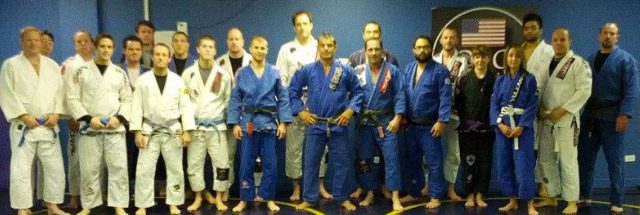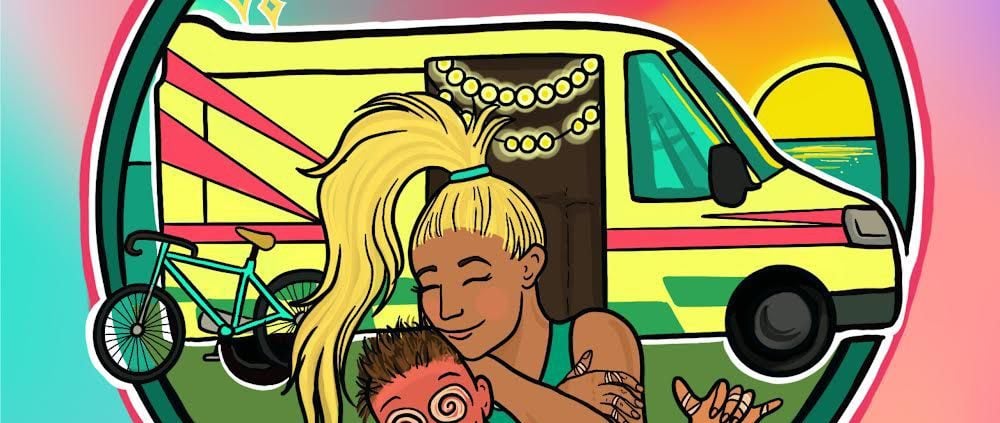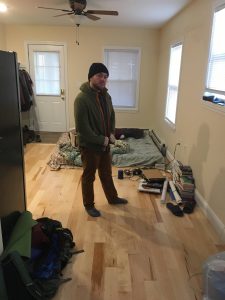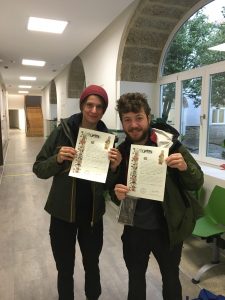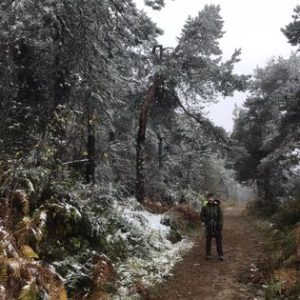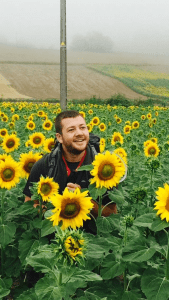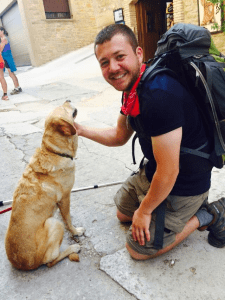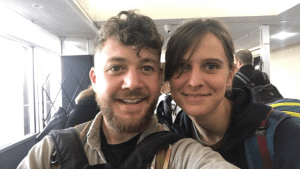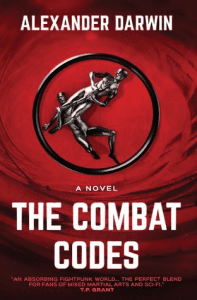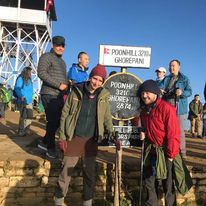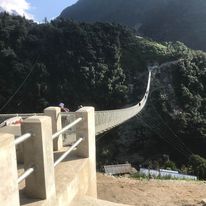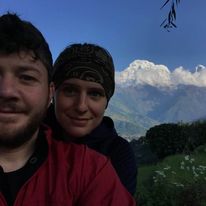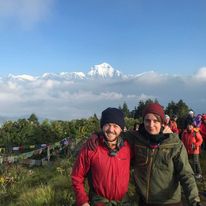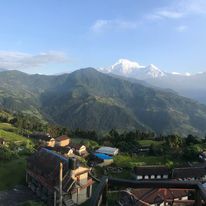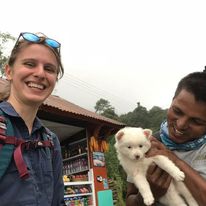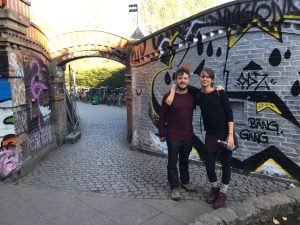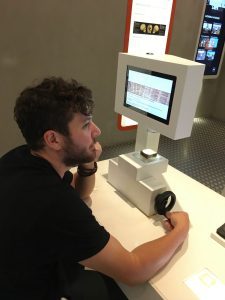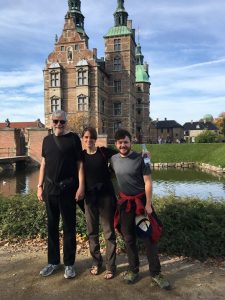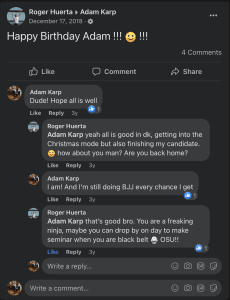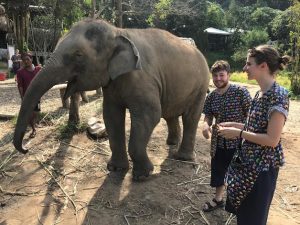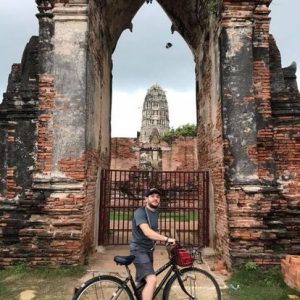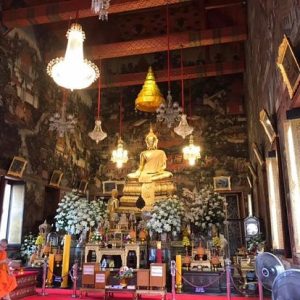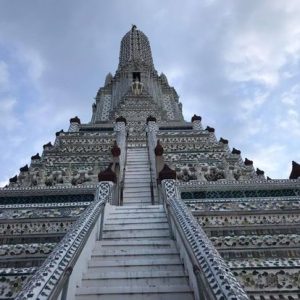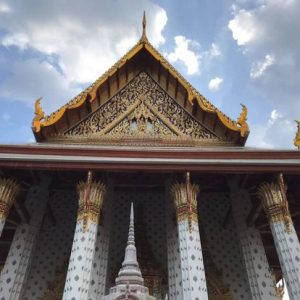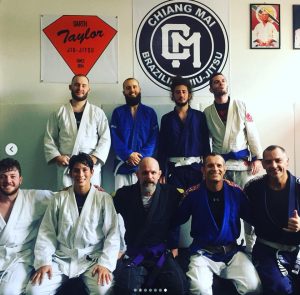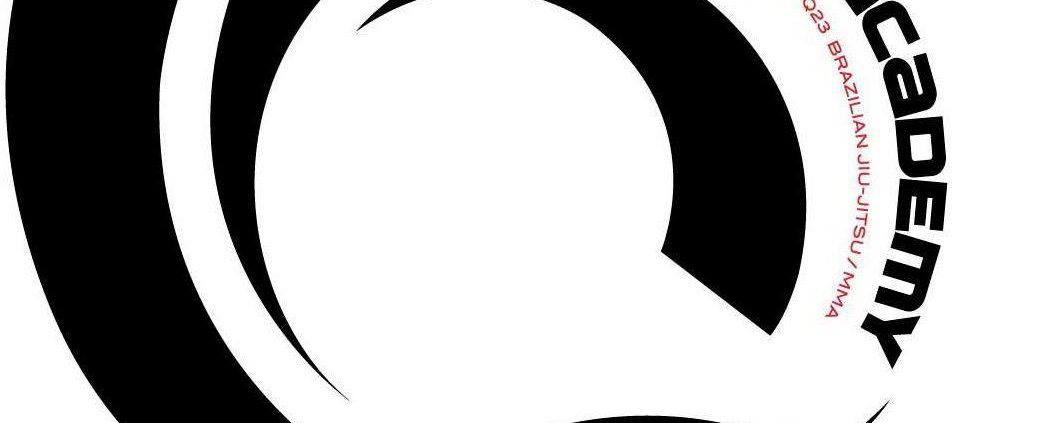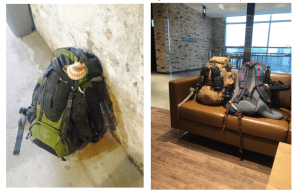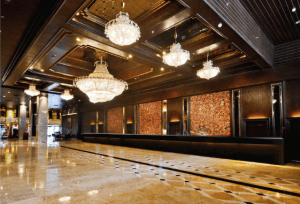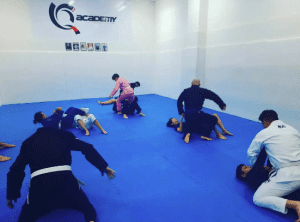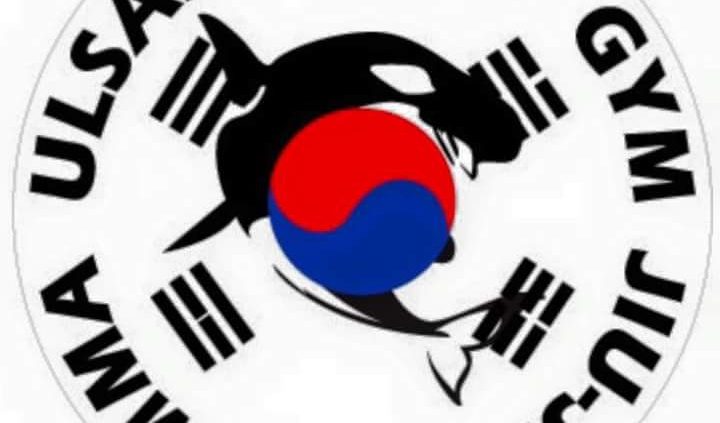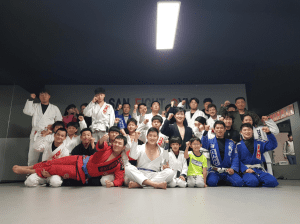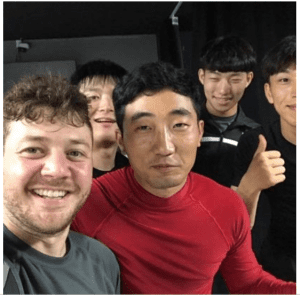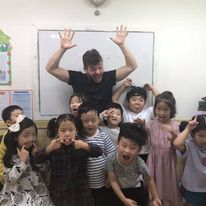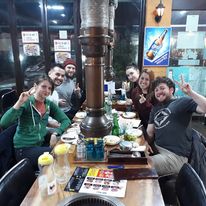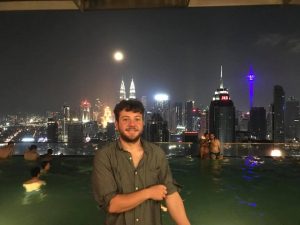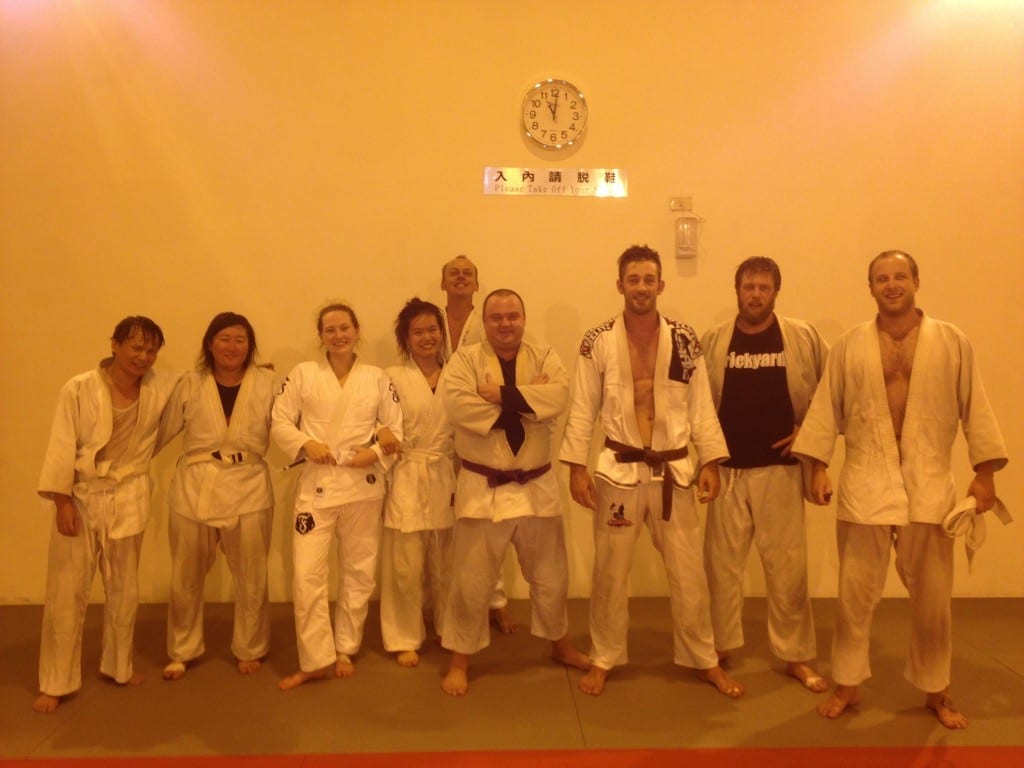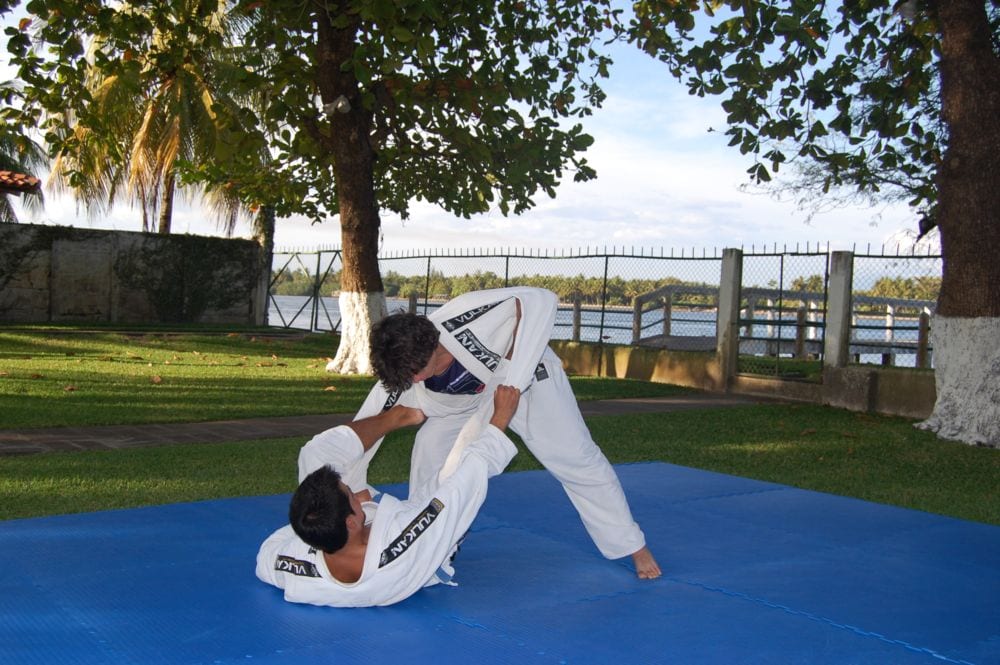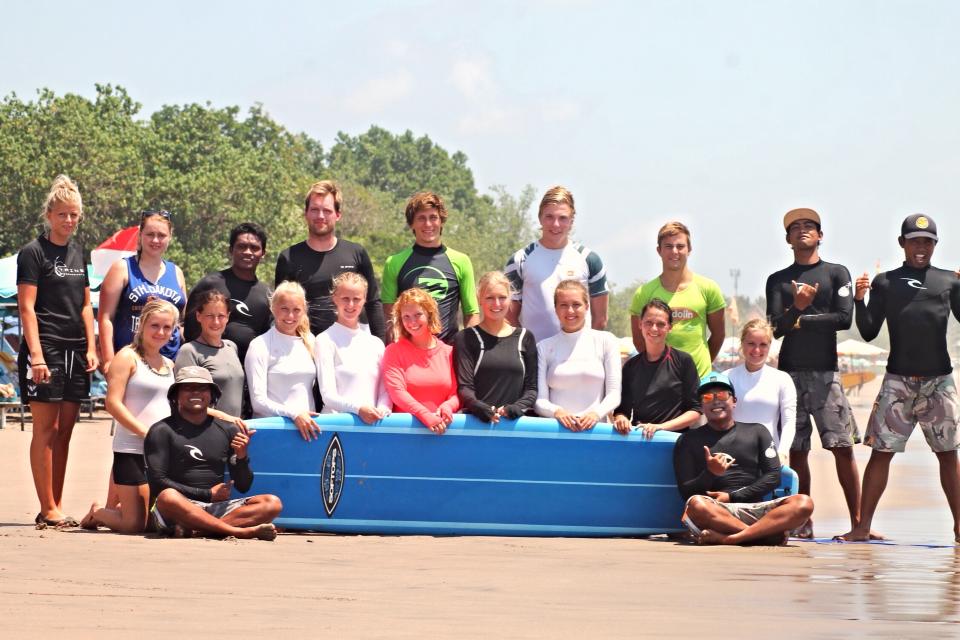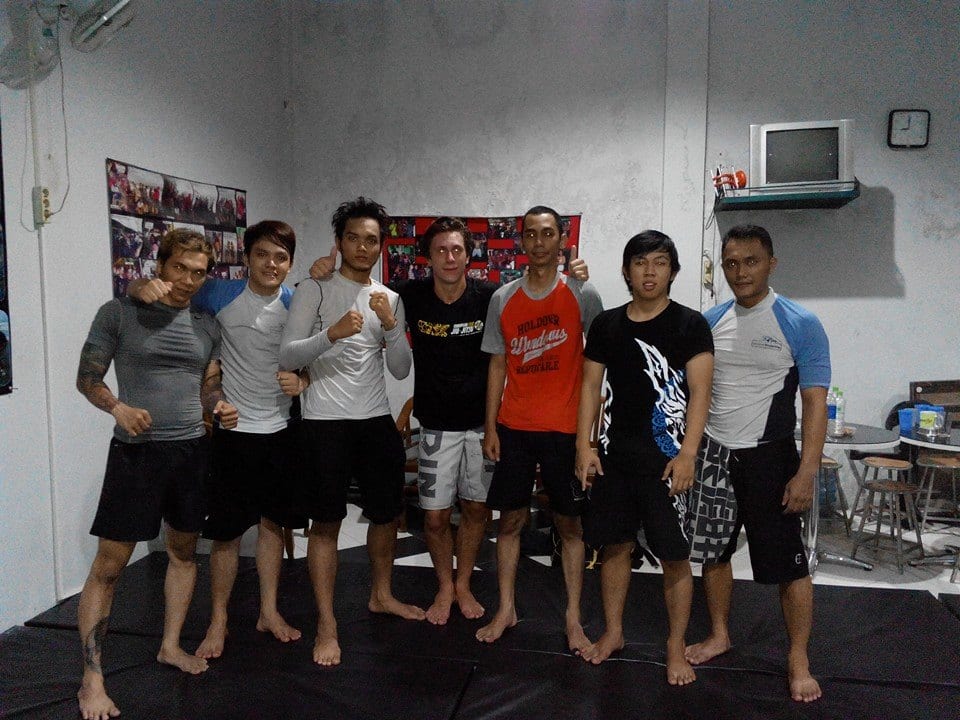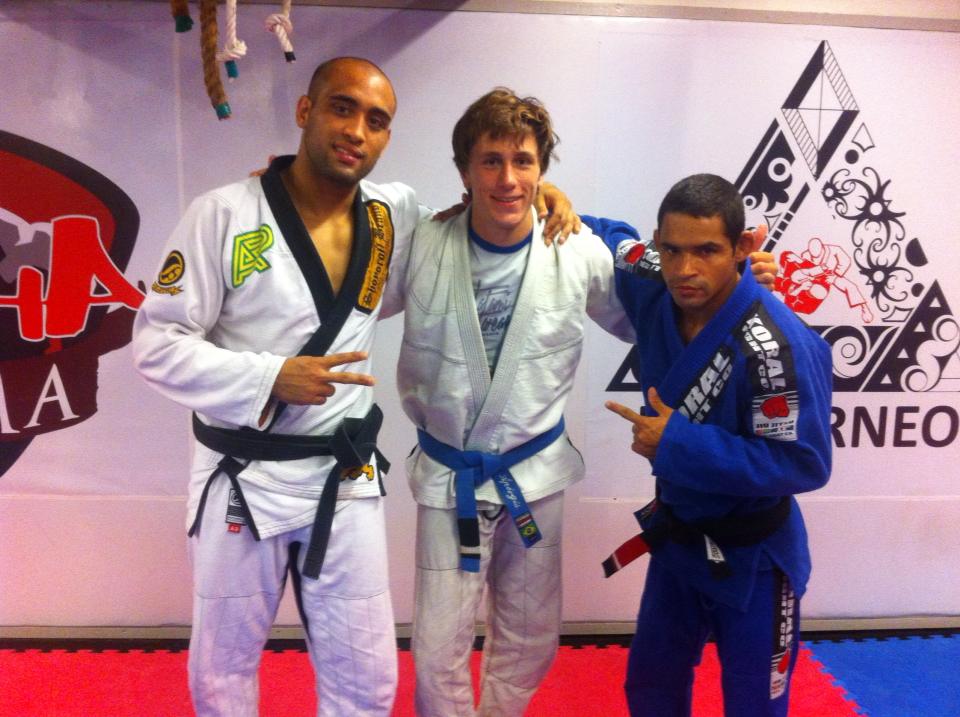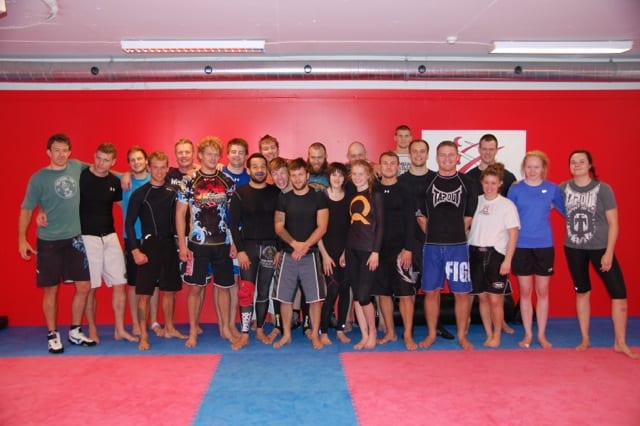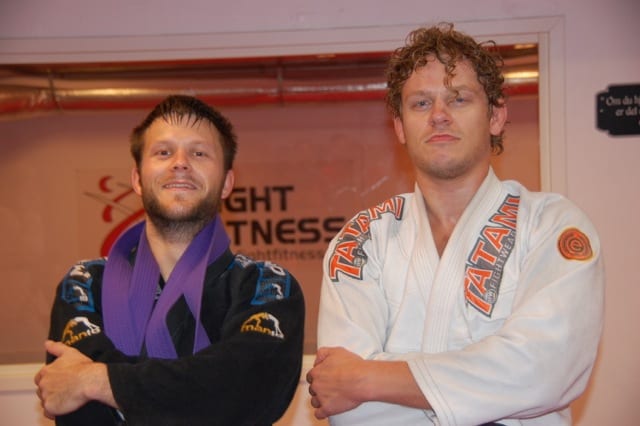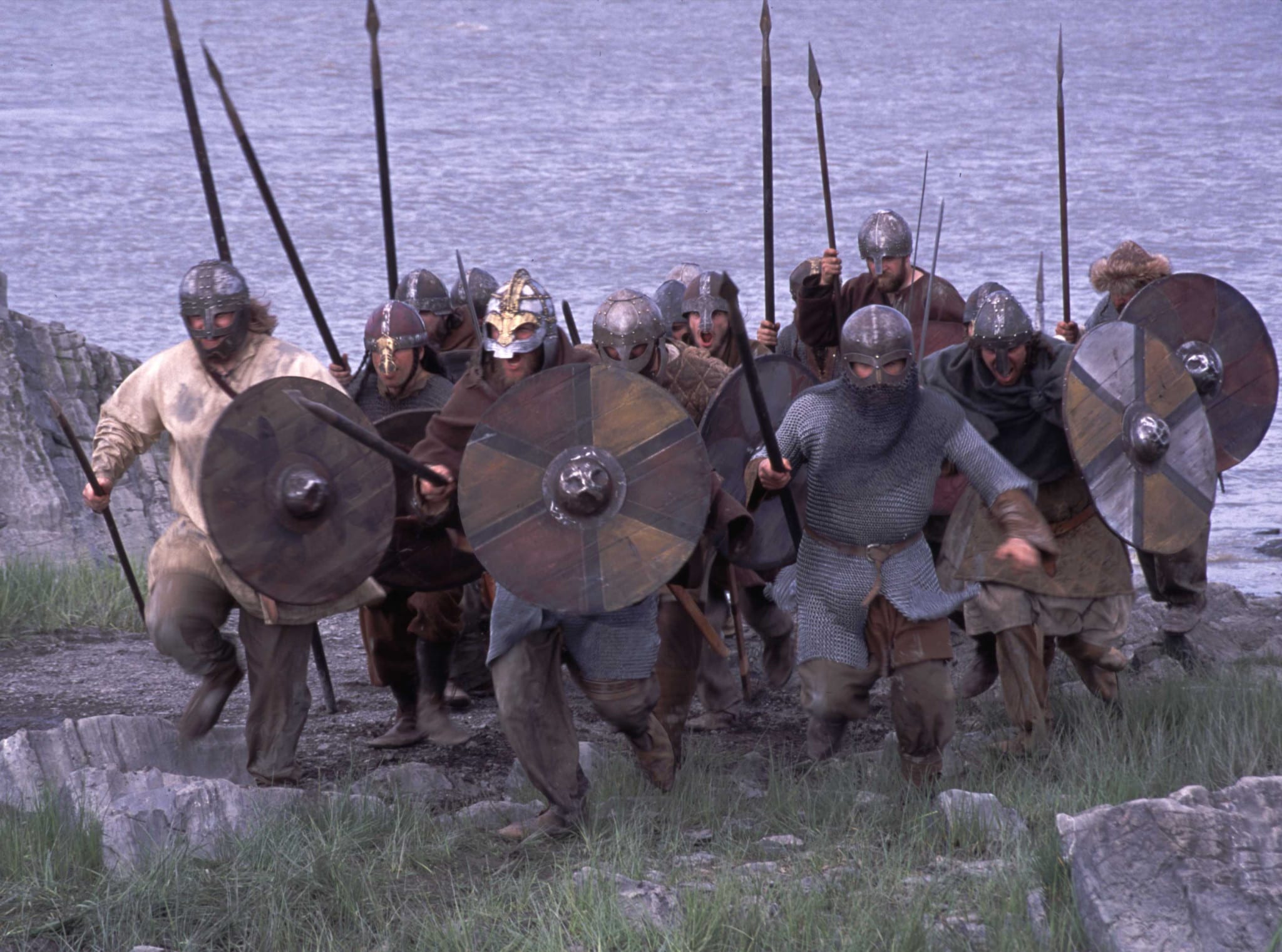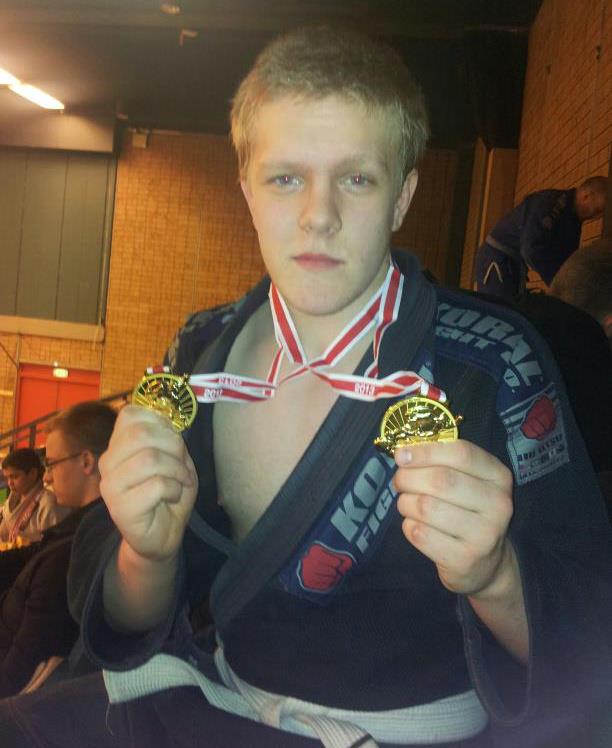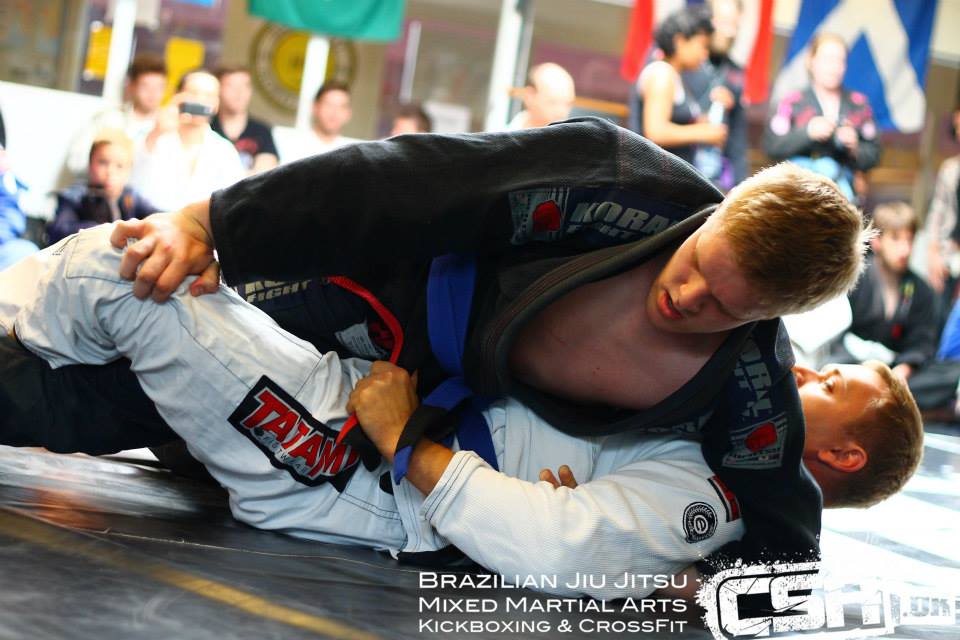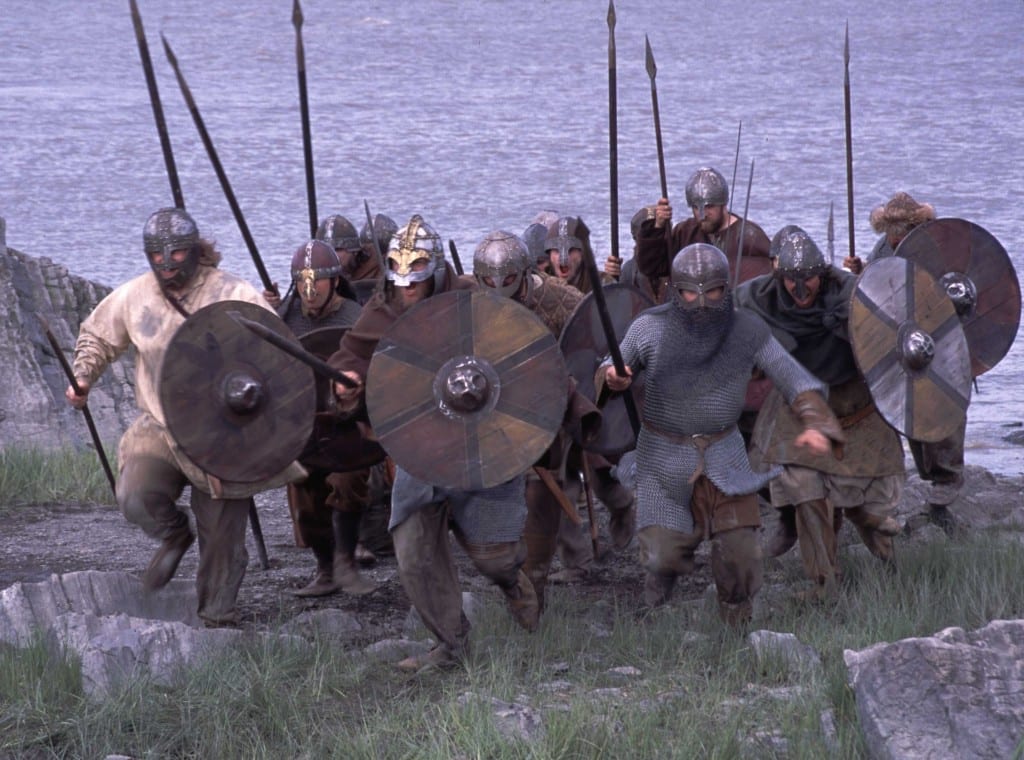End of an Era: Trying To Pick a Home as a Globetrotter and Failing
Dust Mop Jiu Jitsu: The Expat Files: Chapter Eight: Vermont Brazilian Jiu Jitsu-Williston, Vermont
-On looking for a home as a globetrotter and not finding one
This is the Eighth and final chapter of what I’m calling the Expat Files. If you want to know more about what this project is, you can read more about it in the first article here.
–
I’m a bit of a youtube junkie. I love me a good explained video or a short doc about somebody doing something incredible with their lives. If you’re looking for a good one, there’s one called Two Years on a Bike. This Dutch guy, Martijn Doolaard, goes on an amazing bicycle journey from Alaska to Patagonia. The cinematography is amazing, the storytelling beautiful and you really feel like you are right there with him. But what struck me was the last part where he is so burned out. In North America he was so excited to meet people, go camping alone and soak up the adventure. But as soon as he finishes, he abruptly packs up his things and rushes back to the Netherlands.
I identify with that. At the beginning of 2019, I had just arrived in Burlington, Vermont after a year and a half of being abroad. Even after arriving in the states, my wife and I were still living out of suitcases at my parents houses. The adventure was amazing spanning three continents and 7 Jiu Jitsu gyms between them. At this point I had lost my steam. I just wanted a home to live in and a place to train regularly.
There were certain things I wanted to keep from our lifestyle in Korea. Of course BJJ was one of them. I needed to find my newest place to call home after Ulsan Fight Gym. The other major lifestyle improvement I knew I wanted to continue was riding a bike. As soon as I arrived in Ulsan, I rented one for the year and rode it almost every day. It honestly feels like the perfect way to travel. I knew I would be disappointed in myself if I went back to driving as my default.
Rachel and I could really only afford one car. Burlington was already covered in snow when we arrived on January 1, 2019. Sometimes the streets got so snowy that we had to park our car in the main garage downtown. But in Korea, I rode my bike every day to work and jiu jitsu. It added a sense of adventure to even the shortest trips. So while Rachel had the car, I got a mountain bike with metal studs for the ice.
With the car and the apartment, I needed to find my place to train. So I set my sights on Vermont BJJ. Unfortunately, I don’t remember much from the experience there except the realization that it couldn’t be the place for me.
If you go there and you’re reading this, I hope you understand that this article isn’t here for me to needlessly pick on your gym. It’s to explain to my readers how I ruled out a gym from being the one. It’s not a lens I had to use when visiting other gyms in my travels, but I wasn’t looking for an interesting experience, I was looking for a home.
If you haven’t seen his channel before, Icy Mike, a combat sports vlogger, once made a brilliant video about how to pick a martial art gym. He puts people into two main categories. The first are people that are there to compete at the highest level. The second is…everyone else.
For the first folks, you find the place that competes, and wins, at the highest level. That tackles everything else. But for everyone else, there’s only three criteria.
- It’s close to your house.
I packed my gi, and rode my heavy mountain bike to Vermont BJJ. From our place it’s about a 30 minute ride. Doing this in the snow is always tricky. The shoulders on the road get pretty narrow and drivers aren’t always the friendliest folks in the Northeast. It’s pretty easy to get overheated and dehydrated. As it turned out, the gym was closed by the time I got there so I went home. A few days later, I managed to get the car and make it back. All I could think about was how hard it would be to bike for an hour with a BJJ lesson in between.
With the car, it only took fifteen minutes to get there. Still I knew that I wouldn’t always have access to it and needed a place closer by.
- You can afford it
I honestly don’t remember much about the lesson. That’s actually a good thing. I do remember thinking that it felt familiar enough for me to be interested in becoming a member. The instructor was nice, the training partners pretty chill. A lot of them reminded me of the folks at Boston BJJ. An older crowd for sure but not as rowdy as the folks at Grind, which I had tried the week before.
At the end of the lesson, I had a good conversation with the instructor. He handed me a price sheet. It was the first time I experienced sticker shock in BJJ. 180 dollars a month would guarantee me two lessons a week. Any more and I was looking at spending 200 bucks. This place was way out of my price range.
In my article on Grind I talked about the tough rolls and how I wasn’t ready for them. I’ve spent enough time in the BJJ world to know that their tuition is not outside the norm. Outsiders tend to balk at the price, but it’s important to remember that every BJJ lesson is taught by someone who is providing a service. That’s a little different than just paying a rock climbing membership where nobody is instructing you. But again, I wasn’t in a position to pay that kind of tuition back in 2019. Nowadays, in Northampton, I pay something close to it. Physically and financially, I’m now in a different place.
- You like the guys there
The guys there were solid. But getting to know folks usually comes with time. I do have patience with the fact that BJJ practitioners aren’t always the most forthcoming with new people. The folks at Fairborn were uncommonly friendly but they only had a few people there. In most gyms there’s often an attitude akin to “I’ll learn your name once you stick around for more than two months.” Once you learn how much work is involved in being in this sport, you realize not everybody makes it past that point .
1 out of 3 wasn’t enough for me to sign the contract. I left that day feeling like Martijn Doolaard almost getting to the destination. I just wanted the search to be over so I could get on with my life.
It’s hard to predict what gyms will meet all three criteria. If you read my next article, you’ll find out.
The Dust Mop Takeaway:
This is a strange article compared to the rest of the ones I’ve written. Again, if you are a member of Vermont BJJ, please know I’m not just trying to crap on your gym. I recommend you go to my home page to understand what this project is and why I’m doing it.
But the main memory I have from this gym experience is how to understand when a gym is not the right fit for you.
End of an Era:
Most globetrotters who write stories and make videos have a home gym that they leave for a period of time to go explore the world. I had the opposite experience, I spent three months traveling and training at different academies without any place to claim as mine. Towards the end, I wasn’t looking for adventure anymore. I was looking for a home.
I didn’t stop traveling and training once I found it. But I was no longer a ronin with nobody checking on my progress. All the fun and freedom of floating around to different schools reminded me of what I lacked and needed: mentors and coaches that are invested in me. Vermont Brazilian Jiu Jitsu the last gym I visited as an expat.
The next chapter will begin a new series about what it meant for me to approach training more seriously in a focused way. I would continue to travel to other schools. My wanderings were over, but my true journey was about to begin.
When You’re Not Tough Enough
Dust Mop Jiu Jitsu: The Expat Files: Chapter Seven: Grind BJJ-Burlington, Vermont
-On bullshit jobs, belt politics and not feeling tough enough to belong
This is Chapter 7 of what I’m calling the Expat Files. If you want to know more about what this project is, you can read more about it in the first article here.
Broadly speaking, I like to think about my Jiu Jitsu journey being in three main phases.
- The Expat Files: My experiences in Korea and the gyms I went to before settling in a stateside gym
- The Combat Base: Here I stayed mostly with my gym Combat Fitness MMA in Winooski, Vermont. I still continued to travel but always had Combat as a reference.
- The Pandemic: I would eventually leave Vermont and float around until eventually joining my current gym in Northampton, MA.
If you haven’t been reading my articles, this blog is a project to remember at least one thing from gyms that I’ve visited in my BJJ journey. The next two articles will be unusual because the following three articles will be about local gyms that I would choose between. They could have become my main gym, but these articles are going to be about why they didn’t.
–
On January 1st of 2019, Rachel and I finally stopped our transient journey home from South Korea and made it to Vermont. It took a long time for us to settle on a U.S. City. We wanted a place that would feel like it was both of ours. We met in rural Vermont so we ended up choosing Burlington. We would eventually come to like it but moving somewhere in the dead of winter is a horrible time to make friends and get situated.
Our apartment, although nicer, was even smaller than the one we had in Korea. No joke, we could reach the oven from the bed. But we had a bathtub and a laundry machine so we were relatively happy.
Rachel already had a job set up through a youth agency. Being in graduate school I needed to find a job that would allow me flexibility. I became a substitute teacher.
David Graeber in a brilliant article defines a bullshit job as employment so pointless that the person doing it can’t think of a reason for it existing. The people doing these jobs often suffer from an existential angst that they aren’t contributing enough to society.
He was once asked if there were any jobs where people didn’t mind the fact that they were bullshit. “Yes! Substitute teachers.” The kids know it’s not teaching, the subs know it’s not teaching, it’s flexible hours and they often have other things going on in their lives aside from their work. Perfect for me at the time
The orientation was incredible. I’ll never forget our instructor asking us a real head scratcher.
Instructor: Who can tell me why you shouldn’t fall asleep in class as a teacher?
Us: (Silent. Either confused by the question or not wanting to dignify it with a response).
Instructor: Because the kids will take a video of you and put it up on youtube.
She proceeded to show us a compilation of 20 different substitute teachers falling asleep in class. The bar was set exceptionally low.
You also have to understand what being a substitute teacher did for my ego as well. Here’s how it used to go when I told people my job.
2017 Me: I’m a wilderness therapy guide. I hike with people struggling with their emotions.
You: Whoah! Tell me all about that! How did you get certified? What’s your craziest story?
2018 Me: I teach English to kindergartners in South Korea
You: That’s wild! What are they like? How was Korea? Did you see Kim Jong Un?
2019 Me: I’m a substitute teacher
You: …Oh…
Picking a school to sub at is a lot like finding a Jiu Jitsu gym. You gotta find the right distance from your house, the time it takes to get there has to be worth it and you need to like both the students and the administration. For teaching, I ended up at Lyman C. Hunt Middle School. For BJJ, there were four schools, but I could only consider three of them.
I first tried Grind BJJ. It was fairly close to my house so I could easily walk there. Like CSA in Copenhagen, it was also part of a community center. There were yoga and art studios nearby. I remember getting in there and seeing some guys already rolling no-gi like they were training for ADCC. The owner got up to greet me with two bleeding cauliflower ears. “Yeah, I get weird stares at work but they never really go away so I’ve stopped caring.” Imagining the contrast between him and the nice ladies spinning pottery across the hall would continue to entertain me in my darkest moments for years to come.
If you haven’t already seen it, Cauliflower ear is what happens when your ear gets irritated over and over again. It starts to look like a sponge. Or it can swell up in spots looking like there’s a marble growing out of it. This guy had both kinds. I kept picturing him making small talk around the water cooler with his coworker doing his best not to stare.
If you go to Grind’s website, it’s a bit like walking into their space: no frills. Their set-up is just mats and some thai pads in a community center right next to middle aged dancers and a pottery studio. Because we were next to a salsa class, there were some pretty cool beats coming from next door. I remember thinking it would be cool to spar listening to that. That’s until someone said, “fuck that noise.” They started blasting metal. I felt bad for the Salsa class.
The man with the ears said, “Happy new year everyone, here’s your resolution. It’s that these (his hands) become hooks. Don’t think of these as being fucking hands, from now on they are fucking hooks.” From there we rolled live rounds for 20 minutes and I was getting mangled every which way.
These guys were killers. I’m sure if I stuck with them, I’d be one too. But I didn’t feel strong enough to be a part of their gym. It’s also a vibe thing. These guys seemed like men. With a capital M. I’m a goofy therapist who used to teach kindergarten. I couldn’t see myself meshing that well.
The Dust Mop Takeaway at Grind happened on the way out the door. One of the guys was walking out the door and stopped to look at me. “Hey man, I noticed that you looked a little out of breath. Just to let you know, if you go fast, they’ll go faster.”
He was totally right. In Jiu Jitsu, you can set the pace however you want. It’s an interesting irony that stronger people will go slower and people who have no strength max themselves out in thirty seconds. At that point, I was not putting any effort into my strength or conditioning. So I was slower, weaker and had less cardio than I do now. But that caused me to panic. One year later, I was rolling with a brand new white belt who was spazzing hard. I remember my coach at the time saying to him, “I guarantee you that if you go slower, Adam will too.”
These days I feel better about my ability to keep up. I’d like to go and visit Grind if I ever get the chance. I don’t live in Burlington anymore. I’ve done a lot more for my strength and conditioning. It’s a great gym with fantastic rolls. But at that time, I knew it wasn’t a good fit for where I was on my Jiu Jitsu journey.
These days, I’m a lot stronger than I used to be and wouldn’t mind going back to visit to see how it feels to roll there now. It’s possible if I stayed at Grind, that improvement would have happened quicker. But it’s also possible I would have quit faster as well.
Years later I heard that Grind was founded out of desperation. Some of the guys were brown belts at a bigger place nearby. They were on the cusp of black chafing under the leadership of the one person likely to promote them. Eventually they were expelled but they weren’t willing to bend the knee to someone new. It’s not just their gym, it’s the entire system that holds people in academies they don’t want to be at until they get blessed with that black belt.
Here I was, one year in scared shitless that I would never get my blue belt. Here they were ditching the whole belt hierarchy behind. They struck their own way. That explained their website and their style. No kings, no gods, no bullshit. Just jiu jitsu. In some ways, this project is aligned with theirs. But I wasn’t ready to jump ship just yet. So I kept looking.
–
My goal is to visit 100 gyms! If you ever want me to visit yours and write about what it’s like to learn from you, feel free to reach out at Du*************@***il.com or follow me @DustMop_JiuJitsu
If you want to read my articles as soon as they’re published, you can follow me here.
Trekking, the Camino and How the BJJ Globetrotters Network Brought Me Home
Dust Mop Jiu Jitsu: The Expat Files: Chapter Five: Boston BJJ-Newton, Massachusetts
-On focusing on the journey instead of the destination and the importance of being a beginner
–
This is Chapter 5 of what I’m calling the Expat Files. If you want to know more about what this project is, you can read more about it in the first article here.
–
After Denmark, Rachel and I made our way to Germany, Spain and Portugal. By the end of our four month journey, we had explored mountains, tried surfing and obtained official documents absolving us of our sins (Neither of us are Catholic, but it can’t hurt). Each place was amazing but we had a special mission for Spain: the Camino de Santiago.
I’ve previously written about my love for trekking. Living out of a bag and only eating what you can carry gives you a simple daily structure . For the Camino:
| 7am: | Wake up, roll up your sleeping bag, lace up your boots, wolf down a pastry, slam back an espresso and start walking |
| 9am: | Stop for second breakfast |
| 9:30 am: | Keep walking |
| 1:00 pm: | Lunch |
| 1:30 pm: | Keep walking |
| 3 or 4 pm: | Find your hostel, claim a bunk bed, take shower and a nap |
| 5 pm: | Get dinner with some strangers and have the best conversation of your life |
| 8pm: | Bed |
It’s a hiking trail that’s like no other. You walk over the pyrenees, through the desert and then to the ocean. As a pilgrimage, these different parts of the trail have meanings. The first part, over the mountains, is good for the body. The second part, the Meseta, is devoid of scenery and it forces you to turn inward and examine your mind. The last, toward the cathedral of Santiago de Compostela, is for the soul.
Three years prior, I had started the Camino on my own. The whole thing takes six weeks, but in 2015, I only had three. I remember agonizing at the time about what I should do. Should I take a bus to the last bit? Perhaps I could skip the meseta. Maybe I could rent a bike.
I had fallen in with a group of hikers who gave me different advice. My assumption was that I would not be able to ever come back to Spain so I needed to get to Santiago now. I’ll never forget the conversation I had with this older French dude named Jerome.
Jerome: Ah so you will coupé (cut it) with a bus?
Me: I’m considering it
Jerome: But you will ruin it! Just walk to where you can and come back. You will see, it’s amazing! It will be just as you left it!
Me: But I’ll never be able to come back!
At the time, I was annoyed with him, but he was totally right. The best part of the Camino is starting it and looking forward to the journey. I remember meeting people who skipped the first few days so that they could make it to Santiago. I actually felt sorry for them. Like Jerome said, being a beginner is the best part. In contrast, the end of the Camino, in 2018, was totally sad. The hope that we would reach Santiago is what got me out of bed each morning, now we didn’t have that. Rachel and I actually labeled it Post Camino Depression. But the beginning, the bonding with other travelers, the arduous hikes, is what made it special.
After the trail, we flew to Boston from Barcelona. The cool thing is that we flew to Korea out of Los Angeles so since leaving the states, and then went to Europe and finally to Massachusetts. That meant that since leaving the USA for Ulsan in 2017 we had actually circumnavigated the globe.
It had been six weeks since I had trained any Jiu JitsuBy the time we arrived in the states. Luckily I knew exactly where I could go. Boston Brazilian Jiu-Jitsu Academy caught my eye years before going to Korea, but I was always too nervous to go in. But here I was, six months into training. I had already been brave enough to start the process and continue it in other people’s gyms. This would be my first foray into establishing myself as a BJJ practitioner in America. Interesting how for some, the globetrotters network brings them gyms all over the world. For me, it literally brought me home.
All that confidence crashed after I stepped onto the mats and saw a wall of people wearing black belts. At Ulsan Fight Gym in Korea, my instructor was a purple belt. In Thailand, I met black belt instructors but nobody else was at that level. This was the first time I saw black belts learning from black belts. To this day, Boston BJJ is the most black belt heavy gym I’ve been to.
The class was at 7 AM. I dragged myself out of bed to get there. In late November, a few guys were freezing at the door. The instructor, John, finally showed up late and herded us inside. Since none of the guys complained, I figured this must be normal. Nobody even noticed me enough to find out if I was a member. They just rushed on the mats and started a twenty-five minute game of King of the Guard.
If you haven’t played it, King of the Guard works like this:
- Everyone pairs up with one person being put in guard
- The person in guard has to pass
- If he makes it, he stays down and somebody new comes to him
- If he doesn’t he finds a new person
- The person who has guard needs to sweep or submit
- If he sweeps or submits, he stays where he is
- If he gets passed, he gets up and finds a new person
I got swept and submitted less than 30 seconds with each person. It wasn’t even close. These guys were toying with me like a cat with a ball of yarn.
One guy showed up late. He walked slowly, had wrinkles under his eyes and looked frail. He made the loudest old man noises as he stretched. Once he was on the mats, I walked over to him and he looked deep in my eyes. He spoke extremely slowly to me. “Listen. You are young. I am in my fifties. Okay? Be aware of our age differences and that I don’t heal as fast. OKAY?” Five seconds later I was in the tightest armbar I’ve ever felt.
I had never felt such a gap in skill. In Korea most people were beating me, but it didn’t feel like a shutout. This felt like being in a tornado. I got swept and submitted by everyone in less than a minute. One guy put his hand over my mouth and nose. I remember asking him if it was a legal move. “…no. Just something we like to use for newcomers.”
–
It’s not that black belts are inherently more athletic than everyone else. When you start Jiu Jitsu, you’re not used to moving around on the floor. The movements don’t have access to potential energy. Once your body gets used to that, you have a major advantage over somebody who isn’t. Think about what it’s like to run a race against somebody who doesn’t even know how to walk.
With more advanced people, the intimidation comes more from the sense that they always seem to know something you don’t. Now think about how those people are with each other, how much misdirection they learn to get what they want against somebody who sees their moves coming a mile away. It’s this learning curve that gives Jiu Jitsu its mythic status as the martial art for the little guy.
BJJ people love comparing jits to chess. “You get better by rolling with people who are better.” But these guys were honestly too far out of my league. I would get home feeling like I had never understood anything. They rarely even taught techniques unless the instructor felt like it. The schedule said they had a fundamentals class. I had not yet been to a gym that had separate classes for beginners. A prideful part of me didn’t want to think of myself as a beginner but I knew I had to give it a shot.
I actually ended up really liking the beginner’s class. There’s a split in the Jiu Jitsu world over how much time should be devoted to warm ups. Some feel it robs you of valuable time you could be focusing on Jiu Jitsu. But our instructor, Alex, led them in an interesting way. He would say “20 jumping jacks.” First he would count to ten then we would count in unison from 11-20. When you are new to a gym and a group of people, yet you find yourself moving in the same way as them, you inevitably feel a connection. That team feeling is what was missing from the class with all the Black Belts. Those guys weren’t trying to be exclusive, but the reality is they had all probably known each other for at least 10 years. Just like on the Camino, it’s easier to connect with people who are on the same leg of the journey as you.
Alex also explained some of the basic moves in a way that made me realize I had never understood them back in Ulsan. Alex’s class structure helped me feel like I did in Ulsan, that I was learning something new each day. (He’s also a good writer. Check out this article he wrote about Anthony Bourdain and BJJ or his sci-fi series on MMA. He writes about a dystopian world where wars are fought through MMA matches. The practices he describes in the book actually describe the kinds of methods he used at Boston BJJ).
I spent every day for almost a month at either the advanced or fundamentals class. And I I learned a lot. I like to think I was getting better, but I was more likely learning how to identify what I had been previously doing wrong. Here again, I found it interesting to be around such advanced folks. The advice I got from black belts was great, but the advice I got from blue and purple belts was honestly more helpful. Those were the folks that were most recently in my shoes.
Boston BJJ ended up becoming a second gym to me. I would soon move to Burlington, Vermont. My coach there had gotten his black belt from the Boston BJJ head coach, Roberto Maia, which meant I didn’t have to pay for drop ins. I would train there whenever I was visiting my parents or working in the area. I always looked forward to it as well. I still got crushed by the black belts each time, but I started learning from them as well.
Unfortunately, I think they took a hit during the pandemic. I’m not sure the full story, but all I know is that they don’t exist at that location anymore. I hope they get back on their feet soon and I can see those folks again. Since they closed, I’ve had to look for other gyms to train when I visit my folks. At a few places, I’ve seen some of the Boston BJJ diaspora. I always approach them and commiserate about how much we miss the academy.
The folks I walked with on the Camino DeSantiago will always have a special place in my heart. But similarly, the black belts who crushed me, the blue belts who mentored me and the white belts who grew with me will forever be a part of my BJJ journey.
The Dust Mop Takeaway:
Part of the reason for me writing this blog is to reflect on what it feels like to be a white belt after so much time. When I started BJJ, I remember hoping that I would make it to blue belt before I got to the states. But there’s something comforting about being a white belt. Nobody expects anything from you so it’s a win-win scenario. If you do poorly, nobody looks disappointed, and if you do well, everyone seems impressed (or annoyed depending on who you roll with). It’s honestly something that I think I will miss if I get promoted, that feeling like I’ve got nothing to lose.
At Boston BJJ, I learned to love being a beginner. I got the mindset that there’s always more to learn. Just like being on the camino, there’s always more trail to cover. It’s what inspires you to wake up at 7am, lace up your boots and get walking right away. For jits, it’s what inspires me to get to training five days a week.
–
My goal is to visit 100 gyms! If you ever want me to visit yours and write about what it’s like to learn from you, feel free to reach out at Du*************@***il.com.
If you want to read my articles as soon as they’re published, you can follow me here.
Treat Everyone Like They Will Be A Black Belt
Dust Mop Jiu Jitsu: The Expat Files: Chapter Four: CSA-Copenhagen, Denmark
-On fitting in, reconnecting to nature and BJJ as a communal endeavor
–
This is Chapter 3 of what I’m calling the Expat Files. If you want to know more about what this project is, you can read more about it in the first article here.
–
After Thailand, Rachel and I went to Nepal. I found literally no traces of BJJ existing there. We spent two weeks there trekking and breathing fresh air. This was a detox we sorely needed. Ulsan, the city in Korea, where we had lived, was incredibly crowded. Most nights we had to keep our curtains closed to keep out the neon lights. The first time we slept in our apartment, we heard the screaming cries of a stumbling drunk. But for two weeks in Pokhara, we woke up and saw mountains for days. Missing Jits was honestly worth it.
Rachel’s parents are both academics. Her mom gets consulting jobs all over the world to help museum’s with their exhibits. It’s really impressive because she can tell you all about the cafeteria in each one and what you should be ordering. Right after leaving Nepal, we met up with them in Copenhagen where she was working with the natural history museum.
Copenhagen is a beautiful city with beautiful people. A little…too beautiful maybe. Let me explain. Rachel and I had spent a year where we were, quite obviously, not Korean. People just automatically knew to switch to English when they saw us, or, at the very least not try speaking Korean. We thought that going to Europe would be the end of that but…no. People there all seemed to be a foot taller than me and incredibly stylish. We were planning a backpacking trip in Spain so we only had hiking clothing. But as the Danes rode their bikes through the streets, they all seemed like something out of a Gap commercial only wearing black or charcoal. I swear I saw a woman riding a bike with a scarf on where it waved behind her like a flag. Not a care in the world. No worry, for example, that it would turn into a game of tug of war between her neck and the bike chain. I think most people could tell without speaking to me that I wasn’t a local. I’m too short to be a Dane.
The food was amazing, if not a shock to the system. Good bread is hard to come by in Korea. Most apartments I saw in Ulsan didn’t even have an oven. And cheese options were limited as well. But here we were eating smoked salmon on the richest cheeses and the hartiest breads we’ve ever encountered. I lost a lot of weight in Korea not having access to that stuff. I gained it back in Denmark.
For Jiu Jitsu, I knew exactly where I wanted to go. CSA, home of the BJJ Globetrotters! I knew that was where the whole project of politics-free Jiu Jitsu started. I made sure to get myself over there. One morning, I hopped on what seemed like the world’s most advanced bikeshare and made my way to the class. (Biking in Denmark is awesome, and there are good views everywhere.)
When I arrived I saw a building that looked huge. I knew it couldn’t be 100 percent dedicated to BJJ. It turned out to be a community center with art studios, education offices and gym space. The hallways looked all the same and I wasn’t able to find CSA. I even stopped by a Karate dojo in the building wondering if they shared the mats with them.
Finally, I found the place. They didn’t have a bathroom in the gym space so I went down the hall. It didn’t have a gender on the sign so I went in and saw a room full of doors, each leading to a private toilet. In the middle was the sink with the soap. I went into a toilet stall and changed into my rash guard. When I came out, I saw a woman washing her hands and I was taken aback. Up until that point in my life, I had literally never seen a public restroom set up that way. Why don’t we do that in the US? It would probably save space and make some culture war issues moot. It’s honestly seeing things like Danish bathrooms that make travel worth it.
Roger Huerta was the instructor for the day. He said he was just filling in for the jiu jitsu instructor. Although Adam Shahir Kayoom at Q23 is an MMA fighter, I had never had a class taught by someone who mostly taught striking. But I was intrigued. MMA is an interesting part of the jiu jitsu journey. Before doing BJJ, I had never been interested in the sport at all. But as I learned more about the history of the UFC and the way it brought grappling to the spotlight, I started to gain more perspective. The first UFC I ever made a point to watch had just happened the previous week. It was the infamous UFC 229: Connor McGregor vs. Khabib Nurmagamedov. I had kept my eye on the media hype over it because it felt like the ultimate grappler versus striker setup. I had felt somehow vindicated when Khabib played with McGregor like a cat place with a ball of yarn. My discipline was legit enough to win.
Despite my budding interest in MMA, I was still unsure of what a BJJ class taught by a striker would entail. Roger was the nicest guy. It was me and three Danish guys. I remember one of them being super tall and the other guy being very large. I’ll never forget grappling with the latter and not being able to secure the ever-illusive triangle choke. He said, “Ya don’t worry about it. My neck is too fat. Everybody is telling me so.”
Most Danes I met spoke English better than me so their fluency didn’t really surprise me. Still, what surprised me was that the class was taught entirely in English. It made sense in Thailand since most people were expats. But I still can’t figure out if that’s how they normally do it or if they just switched as soon as I got in the class. Come to think of it, to this day (4/5/22), the last time I’ve been to a Jiu Jitsu class not taught in English was in Korea.
Roger turned out to be a really fascinating person. After the class we had a conversation about life, fulfillment, mental health and training that covered a lot of ground. It felt like the kind of talk you have with a friend over a series of drinks but here we were sober, exhausted and getting into all of life’s mysteries. A few months later, he messaged me on my birthday. Everyone does that on facebook, but his last comment meant a lot to me. He was the first person to suggest that I could someday become a black belt.
If you haven’t seen it, there’s an amazing ted talk called lollipop moments. In it, Drew Dudley advocates for thanking people for offhand comments that make us feel special. Even, or especially, when they can’t remember it themselves.
“We celebrate birthdays, where all you have to do is not die for 365 days. Yet we let people who have made our lives better walk around without knowing it.”
Roger might have just been being nice by suggesting that I might one day become a black belt. But my theory is that longevity in this sport has to be a communal endeavor. The common estimate is that it takes ten years to become a black belt. How can you possibly do that alone?
You need people to care that you stick with it and you need to be invested in their success and longevity as well. People care that I show up on the mats. I have to remember that and care that they show up as well. Treat everyone like they will be a black belt and you might find yourself becoming one faster.
So, this one’s for you Roger. Your prediction was a major lollipop moment.
–
My goal is to visit 100 gyms! If you ever want me to visit yours and write about what it’s like to learn from you, feel free to reach out at Du*************@***il.com.
If you want to read my articles as soon as they’re published, you can follow me here.
Overcoming the Disappointing Part of Travel at Chiang Mai BJJ
Dust Mop Jiu Jitsu: The Expat Files: Chapter Three: Chiang Mai BJJ-Chiang Mai, Thailand
-On the disappointing nature of traveling without a purpose, the connection between BJJ and Trekking and the ways that Jiu Jitsu lets you borrow another life for a day.
–
This is Chapter 3 of what I’m calling the Expat Files. If you want to know more about what this project is, you can read more about it in the first article here.
–
Imagine you take a trip to Berlin. You’re there for three or four days. You see the Wall, Checkpoint Charlie, a number of museums and eat as many pretzels and brats as you can handle. By the time you leave, you ask yourself, “Did I really see Berlin?” You likely haven’t even scratched the surface. There’s always a sense that you could have done, seen or experienced more. It’s the disappointing part of travel that I rarely see mentioned.
It’s one of the reasons I love trekking. You always have a goal: get to the next campsite. On trail, you meet amazing people and gain an intimate relationship with the landscape. As long as you made it, every other experience is a bonus.
Rachel and I had no real direction in Bangkok. It had been less than a week since we left Korea so we had no plans or goals. It was hard to see a purpose for us really being there except to say we had been in a new location. We felt aimless as we headed to our next location.
We took a night train north to Chiang Mai. It’s one of those awesome romantic things that you hope to be able to do at least once in your life. You walk through your carriage and everyone gets their own bunk bed with curtains. To help us sleep, we took the most powerful drowsy pills the Korean medical system can give you. “If you’re flying,” Rachel’s doctor said, “only take them once you’re on the plane! People take them in terminals and miss their flights.” They hit us like bricks. We slept like babies. But we really didn’t know what they were. Prescriptions in Korea often just came in plastic bags. You would walk away from a pharmacy feeling like you’ve collected your fix from a drug dealer. It was only a month after leaving Thailand that we realized they were probably opiates.
Bangkok is loud, overwhelming and fairly polluted. Chiang Mai, on the other hand, is this beautiful, small city centered around a number of Buddhist temples. Definitely a more relaxed atmosphere. We tried to be as chill as possible. We saw the sites, went to a Muay Thai fight, got a couples massage and took a day trip to an elephant sanctuary.
These experiences were fun but there was still the Berlin problem. How could I have a goal that would allow me to “accomplish” the city? It’s harder in urban settings, there’s too many options.
Being from New England, I’ve been to New York City several times. My favorite time going there was for a job interview. I woke up early like a New Yorkers, hit the subway and felt like I blended into the rhythm of the city. In Bangkok, I realized I had felt that way training at Q23. Figuring out the transport, adhering to the Thai schedule and doing the same drills as everyone else gave me the impression that I was borrowing another life instead of simply being a tourist.
I used the BJJ Globetrotters network again to find Chiang Mai BJJ. Even before arriving at the studio, I could feel my new tourism strategy working. Getting there by foot allowed me to orient myself to the city. Also, I felt like I had a reason to be there.
Unlike the gym in Bangkok that was in a five star hotel, this one was on the second story of an apartment building. I went to two classes and both times felt a specific sensation: a rented, clean jiu jitsu gi hitting a body that’s already sticky with sweat. The humidity in Thailand is something else.
Everybody there was so chill! I had more time there to meet people and talk with them. That’s something that didn’t happen much in Korea. Most people in the gym were expats. Both times I rolled with this nice British dude, I think his name was Daniel (second from the right on the top row). I remember he was planning on trekking in Nepal, where Rachel and I were headed next. We rolled and I almost put him in a triangle choke, but it would honestly be another year before I made that work on anyone. Another guy was also from the UK but competed a lot in Israel. Hearing him talk about it, I was intrigued and intimidated. I remember thinking of the competition I pulled out of in Korea.
The guy to the left of Daniel, Kia (I think), was trying Jiu Jitsu for the first time. Bryan, the instructor, surprised me by pairing me up with Kia and asking me to explain some basics. I was thrilled! I had never taught anybody anything in BJJ before.
He made it very clear that he was just trying and didn’t want to commit to anything. But as I explained the difference between being in guard and passing it, his eyes widened in amazement. I’ve explained the same concept several times over the years, it never gets old seeing the gears turn in people’s heads. I sometimes wonder where Kia is now and if he continued.
The expats in Chiang Mai were different. In Bangkok, the jiu-jitsu folks I met had been there for a long time. They had stable jobs and were married. But most people in Chiang Mai were just passing through on their way to mountains and other adventures. This was another important thing for me to see on my jiu jitsu journey.
Previously, I had the impression that if you want to train, you really need to have a nine-to-five and carve out your schedule. But these folks trained in between, and sometimes as a part, of their adventures. Because of that you heard about places that they had trained before, either in their home country or other places.
I had only previously experienced that on trekking trails. You share fires, campsites and beers with fellow hikers. There’s a natural comradery in everyone working toward a common goal. You know the trail will be over in a few days. You want more experiences and friendships like this and you ask your fellow travelers where else have they been or where they want to go. The imagination goes wild and you see the world as one big trail. Leaving Chiang Mai BJJ, I saw the opportunity to learn grappling, experience culture and share the journey with folks all over the world.
I had never connected my love for trekking with my love for Jiu Jitsu. There’s a clear goal, a feeling of slow but constant progress and an affinity for people that are on the same journey. I once met a Rabbi who defined love as just that: people working toward a common goal.
The Dust mop Takeaway:
Getting the opportunity to teach Oren was what I’ll remember the most. It was the first time I taught anybody else in BJJ.
For techniques, I remember my roll with Daniel. Bryan saw us and casually said, “you’re not going to get a triangle choke going that direction.” My body had pivoted the wrong way. I remember him as I watch newer folks struggle to configure themselves.
–
My goal is to visit 100 gyms! If you ever want me to visit yours and write about what it’s like to learn from you, feel free to reach out at Du*************@***il.com.
If you want to read my articles as soon as they’re published, you can follow me here.
What It’s Like to Use the Globetrotter Network for the First Time: Q23 Bangkok
Dust Mop Jiu Jitsu: The Expat Files: Chapter Two: Q23-Bangkok, Thailand
On the pleasures of living out of a bag, trusting your commitment to BJJ and overcoming the fear to drop-in to another academy.
–
This is Chapter 2 of what I’m calling the Expat Files. If you want to know more about what this project is, you can read more about it in the first article here.
–
There’s a specific joy that comes with living out of a bag that’s small enough to be your carry-on. You feel like you’ve stripped down to your most basic essentials. Sadly, my bag that lasted me 10 years and 8 countries fell apart on the last day I left Korea. At the Daegu airport, I quickly found an outdoor store, and repacked my stuff. To save space, we only packed quick-dries, easy layers and, since I was still doing grad school, my laptop. For BJJ, I had decided against bringing my travel gi. All the no-gi clothing lends itself easily to hiking. I said a wistful goodbye to my favorite adventure bag and we were on our way!
After one year teaching abroad, Rachel and I were ready to slowly make our way back to the states. Our first stop was Bangkok, Thailand. We made no specific plans since we knew we would be physically and emotionally exhausted. Leaving our job as kindergarten teachers meant saying goodbye to a hundred small children screaming they loved us. Sitting at the airport, I remember reflecting on how many aspects of daily life would no longer be accessible to us. No more bathhouses, festivals about anything and everything or barbecue with unlimited side dishes (it’s just not the same anymore). My gut had grown accustomed to eating kimchi multiple times a day. Would I even have access to that in the states?
At that point I was in the habit of going to Jiu Jitsu three times a week. Would that be another thing that disappeared from my life like random street protests and little kids treating me like a jungle gym? Not wanting to lose my momentum, I looked up places on the BJJ Globetrotters facebook group. The recommendations brought me to Adam Shahir Kayoom’s gym, Q23. While I was excited to go, I was definitely unsure about what it would be like to visit someone else’s gym. It took me almost 15 years from hearing about BJJ to finally go to a class and now I was just going to waltz into someone else’s club like it was no big deal. Despite my hesitations, something inside compelled me to go through with it.
Bangkok was so different from where we had taught. It’s a mixture between modern developed Asia with skyscrapers and public transport, but with the rustic vibe that comes with motorcycle taxis and floating markets. Getting inside from the noisy street felt like entering an airlock. The gym was on the fifth floor of a pretty ritzy looking hotel. High ceilings, floral patterns, saunas and people wearing tennis whites. It seemed like a country club until I found a door with the logo on it. Q23 operated in a small room and it reminded me of what I had at Ulsan Fight Gym. To date, it’s the fanciest setting I’ve seen for a BJJ gym but the room itself reminded me of what I had in Ulsan.
Adam was a nice guy as he registered me for the class and gave me the rental gi. I remember being fascinated by their routine. Like most gyms, they had some warm up movement drills. But they did partner shrimping and reverse shrimping through people’s legs which actually gave me more context for that specific movement. To this day, I enjoy showing that to new white belts who seem like they’re struggling to get movement right.
“Okay, let’s do some live rolling (Jits speak for sparring).” As soon as Adam said that, everyone went to the wall to grab tennis balls. From there, they rolled while holding them in their hands. I watched from the sidelines since I was asked not to spar. If you don’t know Jiu-Jitsu, grips are extremely important. The gis we wear feel like bathrobes because you are allowed to grab the fabric. Holding tennis balls means focusing more on using your legs. Four years later, I have yet to try that. It’s always cool to see a gym do something unique.
Unlike Ulsan Fight Gym, most people at Q23 were expats so Adam taught in English. It felt so strange to be in BJJ class and be able to understand everything. Not just for the lesson, but also the small talk. For context, all the international friends we made in Korea had the same experience:
- We tuned out the conversations around us since we couldn’t understand them.
- We stopped whispering since we assumed most people couldn’t understand us. (It’s a dangerous assumption. Rachel and I got into some pretty embarrassing situations. We definitely had some Korean folks chime in on some very intimate conversations around our sex life…).
The result is that when you return to the states, people think you speak way too loudly and you find the conversations around you incredibly distracting. The class at Q23 had both problems. I am positive they spoke at a normal volume, but to me it felt like I could hear every word in every sentence in every side conversation.
Despite not getting to do everything, I had a great time. I was also proud of myself for getting to the class. My biggest worry with leaving Korea was that I wouldn’t keep training. Now I knew BJJ would be at least one thing that I wasn’t leaving behind.
After the class, a few of us were chilling with Adam. We all laughed as he told us his daughter was getting into trouble in school for putting boys into submission holds. “They keep messing with her! I also keep on telling her that it’s going to make boys feel uncomfortable if you make it look that easy. I’m probably just encouraging her.”
Except for Ho Chun and a few others, I had never really chatted with someone in a Jiu Jitsu gym. I also never worried about personality clashes since those only occur when you have the ability to communicate. Nobody I was friends with did BJJ and I didn’t know if I could make friends with someone who did. As a visitor, I didn’t know if people would be okay with me being at their gym or perceive it as a dojo storm. But everyone at Q23 was nice, and welcoming. I could see myself hanging out with them.
I remember this British dude being my training partner. He offered me a ride back to my hotel. He had been living in Bangkok for ten years, was married to a Thai woman and first came to teach English before moving on to doing some business distribution thing. Before doing BJJ, he trained some Muay Thai but found everyone too aggressive. He felt like Jiu Jistu was more welcoming. I had just met this guy, was in his car, drinking a coffee that he had just bought me. I had to agree that the folks who do BJJ are my kind of people.
Getting a ride, shooting the shit with the instructor and swapping BJJ stories would come in many more gyms. At each one, I imagined what it would like to stay and make it my permanent academy. What if I became a mainstay instead of a blip on the radar? What if I were there for birthdays, tournament wins and holidays? It’s not that hard to imagine that as a possibility. Later in the states, my strategy for finding friends would be joining a Jiu Jitsu gym. It has definitely paid off, but that’s for a later chapter.
The Dust Mop takeaway:
There’s a unique kind of insecurity that comes with starting Jiu Jitsu. People get instantly hooked. You might know you want to train forever, but you can’t ensure that you will be there one year later. Life and work might get in the way. But at some point, you do something that gives you evidence that you’ll be in this for the long haul. For me, I knew that getting my ass to a lesson in the first week post Korea was proof that I would continue on. Going to Q23 was proof. It was not a passing fad. I had gone out of my way, on a vacation, to train jiu jitsu. From then on, I was able to trust my own commitment.
This was also the first time I dropped into another community’s gym. Before starting BJJ in Korea, I had been scared to walk into a studio. After Korea, I was intimidated to step into somebody else’s. But since visiting Q23, I no longer have that fear. Instead, I had the feeling that these were all people I would want to know better if I had more time. I knew dropping into gyms was going to be a staple of my jiu jitsu journey as long as I train.
–
My goal is to visit 100 gyms! If you ever want me to visit yours and write about what it’s like to learn from you, feel free to reach out at Du*************@***il.com.
If you want to read my articles as soon as they’re published, you can follow me here.
Starting Jiu Jitsu as an Expat in South Korea
Dust Mop Jiu Jitsu: The Expat Files: Chapter One: Ulsan Fight Gym-Ulsan, South Korea
-On getting better each day, hacks for remembering Korean names and staying calm while being choked.
What is this project?
At current count, I have done at least one lesson at thirty separate Jiu Jitsu studios. In 2018, I started BJJ in South Korea and moved to Burlington, Vermont. The pandemic brought me to the Berkshires (western Massachusetts) and then, in september 2021, to Amherst (same state but more East). Throughout my journey, I’ve tried to keep up with going to class at least three times a week. If I found myself out of those four locations, I went to lessons wherever I could find them. Visiting family in Nebraska, attending academic residencies and visiting potential universities with my wife gave me the opportunity to see Jiu Jitsu in multiple states, countries and continents.
Partially because of all the moving, I’m still a white belt. I’ve been trying to make sense of all the time I’ve dedicated to my sport. I’ve gained so much with regard to physical health, confidence and social connections. Yet I keep focusing on the Blue Belt that has continued to elude me. People love to say that Jiu Jitsu is great for keeping your ego low, but I have to admit that I get uncomfortable when people ask me what belt I am. After four years, it can sometimes feel embarrassing to say white.
If you stick around at one gym, my assumption is that eventually you will get a Blue Belt. The gyms I’ve been to don’t want to give one to a guy who’s only been around a few months. They want to be able to take stock in your progress and see your journey. That leads me to this project. I need to take it upon myself to reflect on that journey rather than waiting for someone else to do it for me. Without the promise of a belt, I’ve had to find more subtle ways to mark moments of growth.
The name “Dust Mop Jiu Jitsu” represents my belief that I’ve taken crumbs from everywhere I’ve been. I’ve told myself that seeing all of these gyms has been good for my Jiu Jitsu. But I haven’t really taken the time to reflect on how attending classes while globetrotting has actually helped me. I can’t claim to remember everything I learned from each place. That’s why I feel like a dust mop as opposed to a sponge. But my thought is that, through writing, I will be able to remember at least one way that each gym has contributed to my BJJ repertoire in the form of a technique, a life lesson or an interesting story.
This blog is dedicated to the coaches and students who I’ve learned with along the way. You’ve influenced me more than you can know.
–
This is the first chapter of what I’m calling the Expat Files. It starts when I was living abroad until I found a permanent gym in the states.
–
I began my Jiu Jitsu journey in Ulsan, South Korea. Growing up I had always loved Martial Arts. As a kid, I did Karate and watched every Jackie Chan movie. I quit by sixth grade and rediscovered my interest in my teens. My older brother got really into watching Bruce Lee movies and we would break things around the house trying to recreate our favorite scenes from Drunken Master.
Arthur, a highschool buddy of mine, got jazzed into it too after I introduced him to Human Weapon. We roped in our friend Rae’e and would practice sparring in my parents house or outside the cafeteria at school. Looking back, we must have looked like absolute jackasses trying to pull off flowery kicks on each other.
Arthur heard that Brazilian Jiu Jitsu was this mysterious art where a little guy could beat a bigger person. He ended up trying Jiu Jitsu in college for a year but I was too intimidated. Ten years passed by and I pulled every excuse in the book not to try it out. I told myself that I was too tired after work, too out of shape to start and not aggressive enough to make it my hobby. It didn’t help that Arthur, forever a gym rat and always in way better shape, had made his practices in college sound like the most intense workouts he’s ever done. There was even a gym around the corner from my house near Boston and instead of going to it I waited until I was halfway around the world to give grappling a shot.
I know I’m not alone in starting later than I wanted. Almost every BJJ practitioner I know delayed starting because they weren’t strong/fast/good enough to start. Those same people always wish they had gotten over that and started earlier.
I moved to South Korea in the fall of 2017 to be an English teacher. After being there a few months, my girlfriend (now my wife) Rachel, asked if I wanted to try Taekwondo. “It’s the national sport after all” she said, “we might as well try it.” I hadn’t done a martial art since Karate in elementary school. But doing kicks with a few Korean teenagers and some extremely awkward expats made me realize that it was BJJ that was calling my name.
I was thinking of sticking with Taekwondo and maybe trying BJJ once I felt strong enough. That’s a moving goal post. I still hear this all the time from friends that are flirting with joining. “I’m getting stronger, I think I’ll do it once I feel ready.”. Every BJJ practitioner I know thought they weren’t strong/fast/good enough to start. They all wish they had started earlier and gotten over those fears sooner. One Chewjitsu video in particular helped me realize that I would never be ready, but I would kick myself for hesitating once I started. On facebook, I found the closest academy which turned out to be Ulsan Fight Gym.
The first lesson, Jang Jiwoon, the instructor took me aside and gave me a brief intro. Jiwoon’s English was good but the class was entirely taught in Korean (which I don’t speak). We then started the class with shrimping (which I couldn’t figure out), reverse shrimping (which I couldn’t figure out) and the move of the day. My first ever technical lesson in Jiu Jitsu was the Kimura from a closed guard (which I couldn’t figure out). At the end of fifty minutes, they always did five minute rounds for half an hour. I didn’t expect my instructor to allow me to spar on the first day. I shakily walked over to a nice dude with glasses and a bowl cut who smiled and gestured for me to sit down. I panicked and bucked around. I somehow got the Kimura and my first ever tap. From that moment, I was hooked. That night, I lay awake in bed and I couldn’t sleep. It felt the same as when you start dating someone and you think it might be true love.
I started with two days of training a week and did my damndest to make it three. I already fantasized about doing it all day every day. Only problem was, I couldn’t always understand the lessons. Almost all of them were in Korean. The instructor spoke English but I couldn’t make him give me private directions each time.
The people in the gym were always nice to me. But it was mostly an athletic experience and not a social one. Most South Koreans learn English in school. At the same time, most in my city didn’t really feel comfortable speaking it. There’s an interesting dynamic at play. If you look at test scores, South Koreans have really high grades in English but don’t really need it to have a stable career. It’s like learning advanced math in school and realizing that you’ll never use it beyond your college exams. Asking someone there to speak English is like asking an American to do calculus on the spot. The exception was Ho Chun (red rash guard above), who quickly became my favorite training partner since he loved to make crazy inappropriate jokes in English all the time. With that language barrier, most of my friends that year were American, French, Italian, British and South African. I think Ho Chun was the closest thing I made to a Korean friend.
Of course there were other characters that I grew to love at the gym. The two teenagers on the right of the picture would always chase each other around like dragon flies trying to mate. The kids were really fun and would always pull out their best English with me. One heavyset blue belt would practice shadow boxing with one of those low-oxygen masks and collapse in a puddle in the corner before practice. This old truck driver would try to snap my achilles in half and laugh hysterically whenever I tapped to the pain. Actually, come to think of it, I didn’t like that last guy too much.
Part of the obstacle to getting close to people is also the Korean names. Every Korean name, without exaggeration, has three syllables. The first one is the family name, and then the personal name i.e. Kim (family) Jong Un (given name). That makes it really hard to distinguish people’s names from each other. Remembering names is a prerequisite for friendship in my book
Another peculiar thing is that it’s common for Koreans to pick English names in elementary school and stick with them throughout their education and sometimes their career. I did that in the states in Spanish class but only for the first year (for the record, in sixth grade, I went by Alfredo). There, they did that much earlier, used them for longer, and it seemed like a bigger part of their academic identity. Sandra, a Korean teacher at the school, and I had a conversation about that naming process. I noticed all of the kids call her Sandra, even when they are speaking Korean.
Me: How did you come by the name Sandra? Did you choose it?
Sandra: Actually I changed it in middle school. I started with the name Monica at age five. My parents picked that name. But as more kids started to learn more English, they made fun of me by calling me Harmonica. So I made the decision to change it to Sandra.
I saw a huge variety in these chosen English names. It was only two years post Frozen so there were a lot of Elsa and Anna’s. There were plenty of biblical names like Daniel and Isaac. Some parents opted for using the Korean names (like one of my favorite kids, Ju-Ha). But sometimes parents let the kids pick their own names and the results could be pretty entertaining. The following are a list of names that I, or my coworkers, actually taught:
- Pikachu
- Black Joe (Named after a candy bar)
- ABC
- Dragon
- Luigi
- King’s Guys
It bothered me, however, that I could not remember Korean names. I pride myself on being able to remember names no matter the culture, so I found a good work around. My BJJ coach explained that all I had to do was remember if people were older than me or younger. Apparently it’s totally acceptable to just call somebody by their age honorific. It’s a pretty simple system.
| Are they… | Call them: | Translation |
| Younger? | Dong-Sang | Younger Sibling |
| Much younger (boy)? | Alla | Not sure, never looked it up |
| Same age? | Chingu | Friend |
| Older (man)? | Hyun | Older Brother |
| Older (woman)? | Noona | Aunt |
| Much older (man)? | Appa | Uncle |
| Much older (woman)? | Ajima | Old lady/bag/bat. Actually, don’t call them that…But that’s kind of what it means |
Still, even if I was getting a handle on addressing people. I was clearly missing key concepts since all the instructions were in Hangul. To learn more, I started finding as much content online to help explain the fundamental concepts. Joe Rogan, Sam Harris, Jocko Willink, Nick “Chewy” Albin, Stephan Kesting, Rokas “Martial Arts Journey” Leo and Budo Jake became my English speaking mentors. I started to understand more and got fascinated by the principles that were so critical in the sport. I watched a Rolled-Up episode with Jeff Glover that helped me do a mounted triangle for the first time. “Remember guys, it’s not called a tri-in-front-of-the-guy-choke, it’s a tri-angle choke, you gotta pivot.” Those little details helped me learn how to survive.
Like most over-excited newcomers I got a few injuries. I bruised a rib and did something weird to my elbow. It forced me to pull out of what would have been my first competition. I still went, watched, and wondered if I would ever get the opportunity to compete. The thought both exhilarated and terrified me. I’m not a very competitive or aggressive person, but I wanted to prove to myself that I could do it. It would be another year until that happened.
In hindsight, it’s a good thing I pulled out of that competition. I had started intermittent fasting and was losing weight rapidly. Being an American, I never really got a handle on Kilos as a measurement so I was not sure if I had given an accurate number for a weight class. But I know I lost 15 pounds easily. It was not just the IF that did it. I’ve never considered myself fat but I never had that much control when it comes to food either. Early on I learned that BJJ makes you crazy nauseous if you eat right before coming to class. I remember wanting to puke my second lesson. I ate an hour before the class because I didn’t want to train hungry. But I learned to make a buffer of two hours between meals and rolling. Additionally, I started to avoid sugar on days I attended class. Because of this, I remember turning down a free donut before heading to UFG and thinking that I had never in my life refused a pastry. The pictures below will show what I looked life before and after I started doing BJJ.
In July, our contract with the school was almost up. Rachel asked me what I wanted to do when we eventually returned to the states. Before getting to Korea I was actually pretty lost in my life. I worked in outdoor education for a while and got tired of that. I had earnestly looked into becoming a Rabbi but ended up deciding that it wouldn’t be a good fit for me. A few weeks after starting BJJ, I started a masters in Mental Health Counseling but didn’t have a plan for anything related to work. I also didn’t know if I wanted to be a therapist or just enjoyed learning about the concepts. All I knew for sure was that I wanted to continue doing Jiu Jitsu. After all, this felt like the best therapy I had ever received.
It’s the tap that really makes Jiu Jitsu special. In outdoor education we talk a lot about trust building. Mostly we do that through climbing and belaying and learning to trust. But I felt that getting submitted is what really builds the most amount of trust in any sport I’ve ever done. When you tap to a choke, you are communicating clearly that if you keep going, I will die. The fact that you let go instantly builds a feeling of safety that I had never experienced prior.
My first week, I remember how quickly I would tap as soon as somebody put their arm around my neck. But after a few weeks, I would start to notice I was still breathing. Just because the arm is there, doesn’t mean they have me. I don’t need to panic. I have options. That realization has carried me in stressful moments outside the sport.
At Ulsan Fight Gym, they did skill demonstrations for their stripes. I prepared with a wiry Korean dude who went by the English name Adam. I worked hard and got my stripe but honestly what I’ll always remember from that night was waiting for everyone to be done. This older dude, Jae-Min, tapped me on the shoulder and said, “This very boring!” We both burst out laughing.
After four months of training at UFG, I was about to hit the road. Schools in South Korea usually give you a finishing bonus when your contract is over. Most people take that money and travel a little bit before returning home. That was our plan. We wanted to see a little more of Asia, meet up with Rachel’s parents in Denmark, go to Spain for the Camino De Santiago and then get home in time for Rae’e’s wedding in Boston. But I wondered how I would continue my training. That’s how I discovered BJJ globetrotters. One google search of, “how do you train BJJ while traveling.” Finding the site, I was so relieved to know that I could keep my progress while training! I used their website and facebook pages to look at possibilities for learning BJJ post Korea. If you’re curious about what that was like, be sure to look out for my next article where I talk about my time in Bangkok, Thailand.
The last night I was in Korea, I went to UFG. They surprised me with a cake and said goodbye to me. Jiwoon told me how lucky I was that I would be able to meet Black Belts in the states. Ho Chun, the wonderful weirdo, bought me a bag of socks. Four years later, I think I still have two pairs.
I still keep in touch a little bit with the gym. Whenever I compete in a tournament, I send them some pictures. Someday I hope to go back and visit. The language barrier will still be there, but at this point, I’m positive our Jiu Jitsu can do most of the talking.
The Dust Mop takeaway:
So what did I learn from UFG? Technically I gained a lot of movement and skill. It’s almost a cliche to say that your first few months are usually spent getting murdered by everyone in BJJ. Those first few months were all in Korea so I never really got to see the other side of the hump except for a few clunky submissions scored on people newer than me.
I learned here the lesson that most new, not-particularly-athletic white belts need to learn. Forget about winning and losing. Take stock of what happened in the roll and let yourself know at least one thing that went well. I would do this by telling myself:
“I know I did something right because I got back to my guard”
“I know I did something right because he had his arms around my neck and I didn’t give up.”
“I know I did something right because he worked harder than he normally does.”
You gotta take the perspective that you are getting a little better each day.
–
My goal is to visit 100 gyms! If you ever want me to visit yours and write about what it’s like to learn from you, feel free to reach out at Du*************@***il.com.
November 2013 newsletter
Team Brazilian Jiu Jitsu Globetrotters is not about lineage, affiliation fees, politics or rules. It is about friendships, experiences and the people, who make up the team. Every month, we will publish a newsletter, profiling some of the many interesting people and places around the world, that makes up our team. Most of the articles are being written by Austian BJJ Globetrotter, Sebastian Studirach. If you have any good ideas or stories, feel free to catch him on Facebook :)
BJJ Globetrotters well represented at the IBJJF London Gi/No-Gi Open and Munich Open
The BJJ Globetrotters have been quite active at the latest IBJJF Events and took home some medals for their effort.
At the forefront was Liam Ralph (Denmark) who took double gold in the masters blue belt division in London and Munich. Liam is definitely on a tear at the moment and we hope that he can carry forward his success and be a hot shot at the Europeans in Lisbon next January.
Emil Larsson (Sweden) took bronze at the no-gi event in London and Hannes Mossbauer (Germany) won a bronze medal at his first blue belt tournament after being promoted only a week ago at the BJJ Globetrotters fall camp. The past results are definitely promising for the upcoming year.
Also, a big congrats to Dave Knowles (Canada), who took gold at the IBJJF Master & Senior World Championships in the brown belt division!
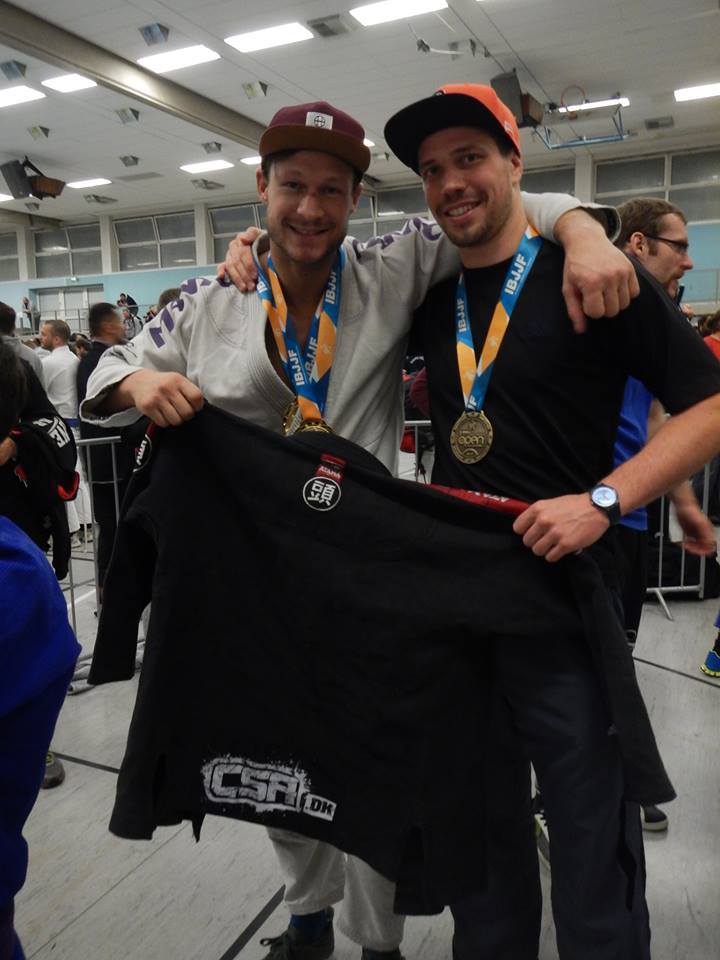
Davey Knight chasing them medals across the world
Davey Knight who is training out of Granite City Grappling in Aberdeen (Scotland) is an avid competitor with some remarkable success in 2013. Davey won Gold at the Scotttish BJJ Nationals No-Gi and silver with the gi. Then he stopped by in Rome and Lisbon for the IBJFF Open, where he also brought home three medals.
But Davey is not only chasing medals in Europe, he recently took a 30-hour travel from his hometown to Tokyo, to compete at the IBJJF Asia Open. The leading signs couldn’t have been worse, with a major jet lag and nice little 7.1 earthquake the night before the Open.
Then Davey decided to do a bit of a special warm up routine: With only 35 minutes before his division started, he found out, that the competition was not at the “Nippon Budokan” Center where he was at, but across town at the “Tokyo Budokan”. So after arriving two minutes before his division started and the best warm-up of his life, Davey stepped on the mat and fought his way into the final of his division, where he took the silver medal. I guess “no excuses” sums his achievement up at best.
Teaching on and off the Mat with Daniel Reid.
Daniel Reid better known as „Danimal“ who has been promoted to brown belt during the BJJ Globetrotters Summer Camp is now teaching in Taiwan. But Daniel is not only teaching 10 classes of BJJ per week at Kaoshiung BJJ, Tainan BJJ and Taidong MMA, which might seem a bit obvious, he is also helping 11-13 year old pupils to brush up there English skills. Believe it or not, the school kids in Taiwan are acutely well behaved and respectful to their teachers and classmates, so no need to show off your submission skills during lunch break or on the schoolyard!
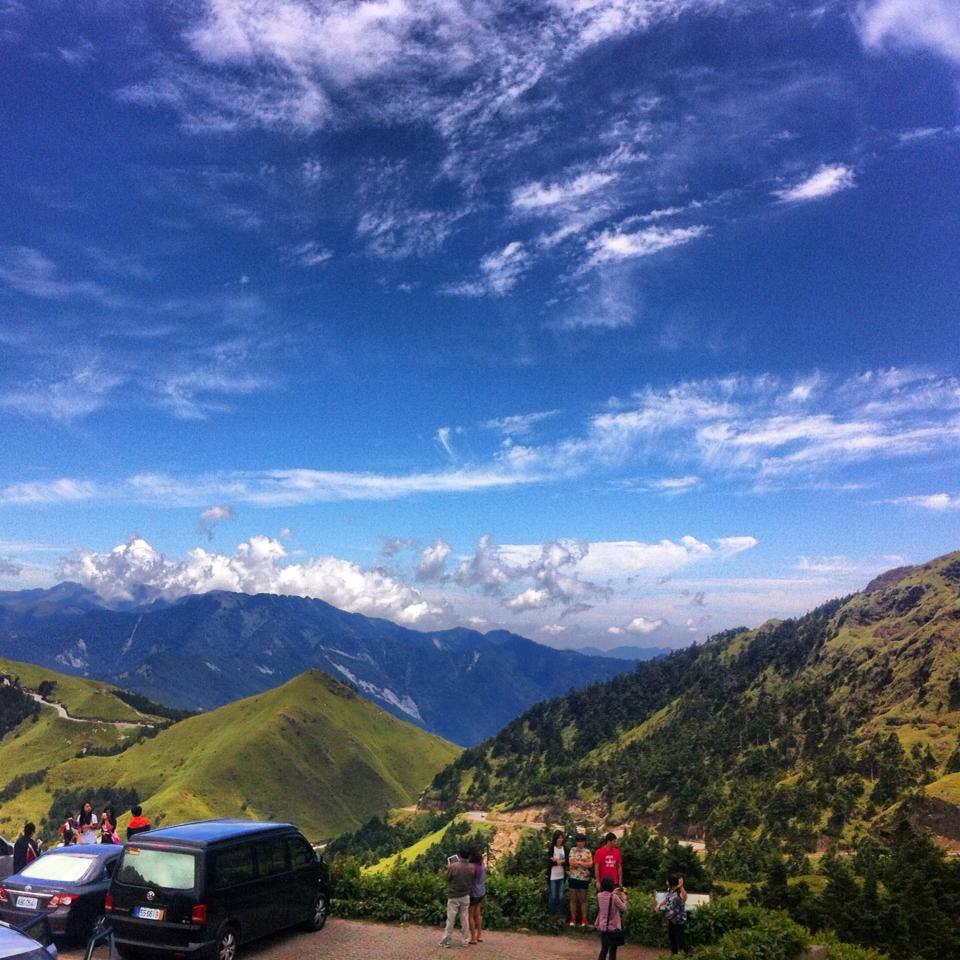
Besides the better weather, nicer girls and weird foods, Taiwan is not too far away from Scotland in terms off BJJ standard and Daniel is doing a good job in helping grow our beloved sport in this part of the world. He also helped to set up the Asian leg of the Roll4Life marathon, which was done on Nov. 3rd for the first time. If you ever plan to go to Taiwan yourself, Daniel might be a good source and help for you.
Affiliated Gym Report: Welcome to Paradise with Casa Kickappo
Casa Kickappo, which is situated at La Herradura, El Salvador, is not the typical BJJ gym as you would expect it to be, it rather is a whole environment of making a visit there unforgettable.
The guesthouse is situated directly at the beach, which is said to be one of the prime surfing spots in the whole of El Salvador. The place is owned by purple belt Luis Beer and his family for over 40 years now, so you can expect some good family vibes and home cooked meals whilst staying there. At the moment Casa Kickappo is a sort of an open mat thing when it comes to BJJ and grappling, besides that, there are many possibilities to train at Alliance or Gracie affiliated gyms in the lively BJJ and grapping scene of El Salvador.
Off the mat, you can pass your time doing various things, such as surfing, fishing or explore the mangrove forest on your paddleboard or kayak. As Casa Kickappo also will be the first host of our Beach Camp in 2014, these might also be some good activities to recharge your batteries after a tough day of training.
Casa Kickappo is now revamping their whole operation, including the mat area to be ready for the BJJ Globetrotters Beach Camp in February. Stay tuned for the next newsletter, to get the latest news on this project.
Interview with Axel Apergis: Jiu-Jitsu the gateway to new countries and cultures
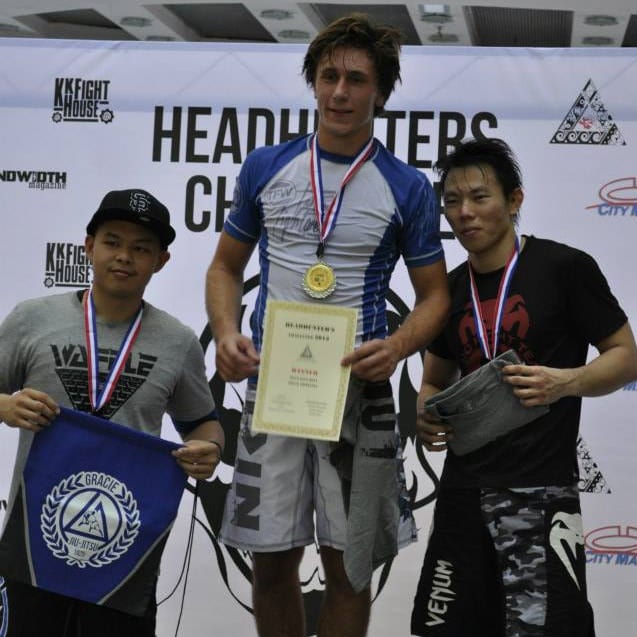
What were the reasons for your current travel? Was it only BJJ and training driven or due to other circumstances?
Originally I didn’t think much about BJJ when I planned where to go for this trip. As I’m the student of the original BJJ Globetrotter, Christian Graugart, I know that jiu-jitsu exists almost everywhere on the planet now so I thought it wouldn’t really matter where I went. I would be able to get some training no matter the destination. The reason for my trip was mainly to see some exotic places, explore nature, and meet cultures different from what I’m used to. I decided to buy a group trip through a Danish travel agency to Asia where basically everything was planned. The main focus of the trip is to see the wild nature of Southeast Asia and experience the culture of the people living here. I also really wanted to learn to surf and Bali seemed like an awesome place to do that. That’s also why I am going to stay longer than the original trip was planned to. A guy from the group (Johan) and I will stay on Bali and try our best to become decent surfers.
Where did you already travel and whereelse do you plan to go to?
I have been around the Malaysian part of Borneo for about a month and now I’ve travelled to the island of Java in Indonesia. I’m staying here for 2 weeks before heading to Bali and a couple of days on one of the Gili islands.
How long will your travel be overall?
I’m still not exactly sure when I’m going home, but around 11 weeks.
Did you train BJJ and Grappling and if so where did you train?
Yes, as soon as I bought the trip I started to look for gyms in the areas I was going to visit. I quickly found BJJ Borneo/Alpha MMA which is located in Kota Kinabalu on Borneo. I wrote them a message via Facebook and they replied I could drop by any day I’d like. So on my second day in the city I visited the local guys. It was a really cool gym run by a BJJ purple belt and MMA fighter, Allen Solomon Chong. My first training was a morning gi training and about 5 guys showed up. I didn’t think it was possible to produce as much sweat as I did in that hour and a half of training. But despite the heat and humidity it was a really good experience and the local guys were all cool.
Did you see any differences to your home country in terms of training style and level of the guys?
The level of the fighters fitted well to their belt colors according to my experience. My second training in the gym was actually a seminar with black belt Yuri Simões. He showed some really cool techniques, which I’m definitely going to work on in the gym at home.
That day, I also got to know that the annual BJJ competition in Sabah, Headhunter’s Challenge, was on a date that fitted my program. As BJJ isn’t a huge sport in Malaysia yet, there would only be brackets in white and blue belt categories and I only had time for the no-gi. I do a lot more no-gi than gi training, so my level in no-gi is much higher than in gi where I’m a blue belt.
Therefore, I asked if there were any higher belts who wanted to have a fight with me in the competition and suddenly I was set to fight a black belt (from Singapore I think). On the day of the competition, I found out he had refused to fight a blue belt so I was put in the blue belt absolutes. After 8 hours of sitting in a bus across Borneo I turned up just in time for my bracket and after 3 fights I had won gold as the first ever european competitor in the Headhunter’s Challenge. It was an amazing experience and I had a lot of fun. It was also pretty special because the competition was held in the middle of a shopping mall so there were a lot of people in the crowd cheering for the local guys. I also had a little backup, though, since some people from my group came and watched. Overall it was one of the most fun experiences I have had on this trip so far.
Training on Borneo was awesome and I actually didn’t feel much of a difference in the structure of the training and the whole mentality about jiu-jitsu was about the same as home. Overall a pretty laid back mentality with room for jokes and fun, but still serious when it came to techniques and drilling.
Now, I have just spent 4 days in Yogyakarta on Java. Before I got here I found a local gym called Core MMA. The owner, Albert Gunawan, offered to pick me up by car and drive me to the gym whenever I felt like it. It was really nice of him, and I promised to make contact as soon as I was in the city. Since Indonesia doesn’t have much BJJ aside from on Bali, it’s hard to find an instructor so the classes are run by one of the white belts. When I heard that, I offered to come and teach for a couple of days since I had a bit more experience. Albert is currently building up the gym in a new location, but it isn’t finished yet, so we had to train another place. It turned out to be a local place where we put mats out on the floor beside a fitness gym. It looked rough but the mats were actually pretty good and it turned out to be a fine location. I was able to teach for 2 days and answered as many questions as possible. The guys didn’t have too much experience, but they were really cool and eager to learn. Just as on Borneo, I quickly made new friends and it has all been a very nice experience.
Now, I’m about to leave Yogyakarta. I haven’t found out where I’m going to train next, but I’m already sure I’ll love it. Even if I’m not able to find a new gym on Java, I heard there is a really good one on Bali so I look forward to that.
Do you have any special events or funny stories which happened during your travelling that you want to point out?
Obviously the training at the gyms and especially competing in the competition on Borneo was amazing. Aside from BJJ, I love exploring the nature and especially seeing animals in the wild has been cool. I also climbed the highest mountain on Borneo, mount Kinabalu. Never have I seen a cooler view. I’d also like to point out what an amazing tool jiu-jitsu is to meet new people and cultures. I have now been in Asia for over 6 weeks and it is most definitely through jiu-jitsu I have come closest to the local people and made friends.
Any further trips planned for 2014?
No, not yet. This year I have travelled quite a lot to different competitions around Europe and I hope to be able to do the same thing next year. Jiu-Jitsu is really a cool gateway to new countries and cultures.
Will you host Halldor from Iceland on your couch / mat? :)
In the past, when people heard that the Vikings of the Northern countries were coming to visit, they knew that raping and pillaging of their little villages were inevitable. Things have changed, and the once so blood-thirsty blondes have put all that jazz behind them. These days, they can be pleased with a couch and a mat to roll on, can you believe it.
Halldór is a young, talented blue belt from Iceland, who is embarking on a BJJ globetrotting trip right after New Year. He is planning on traveling a bit around the UK first, then moving on to New York and from there, anything can happen.
He is looking for couches to sleep on and mats to train on, and that’s where you might be able to help out. If you are anywhere in the area of where he is going, feel free to invite him over. See it as a kind of guarantee that your town will not be burned and your neighbours will not be slaughtered by axes?
On a sidenote, he is a cool kid with great jits and a big smile. Help him out! You can contact him on his email ha**********@***il.com or on Facebook.
Danish Carsten Schau Andersen reports from trip to Chicago
Work sent me to Chicago which gave me the opportunity to train there. With the help of Christian Graugart I managed to find two gym to train in. Valko BJJ and Force Jiu-Jitsu.
